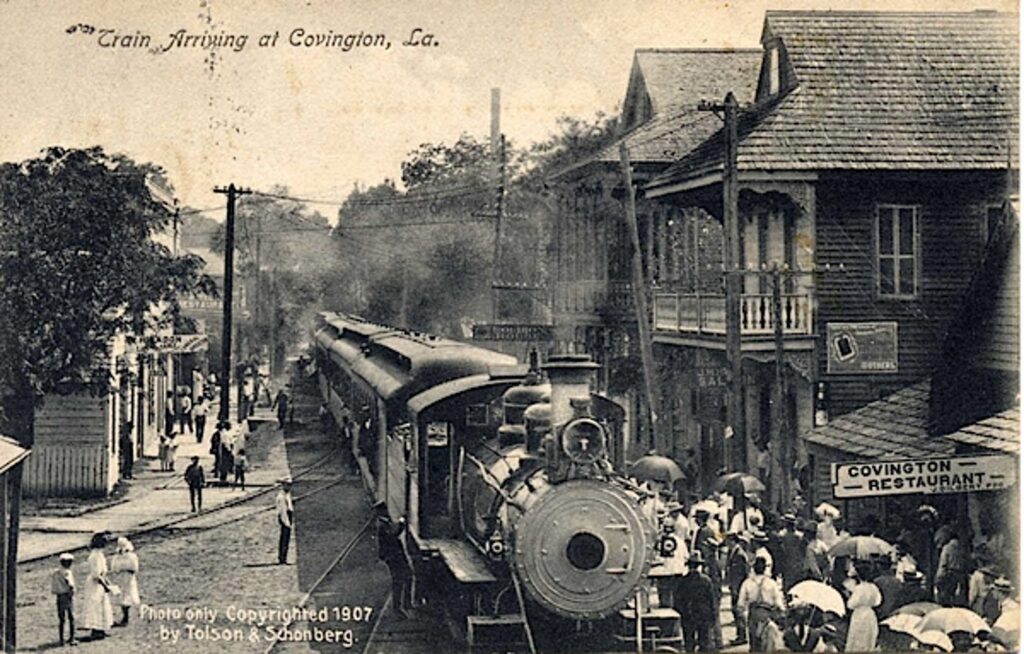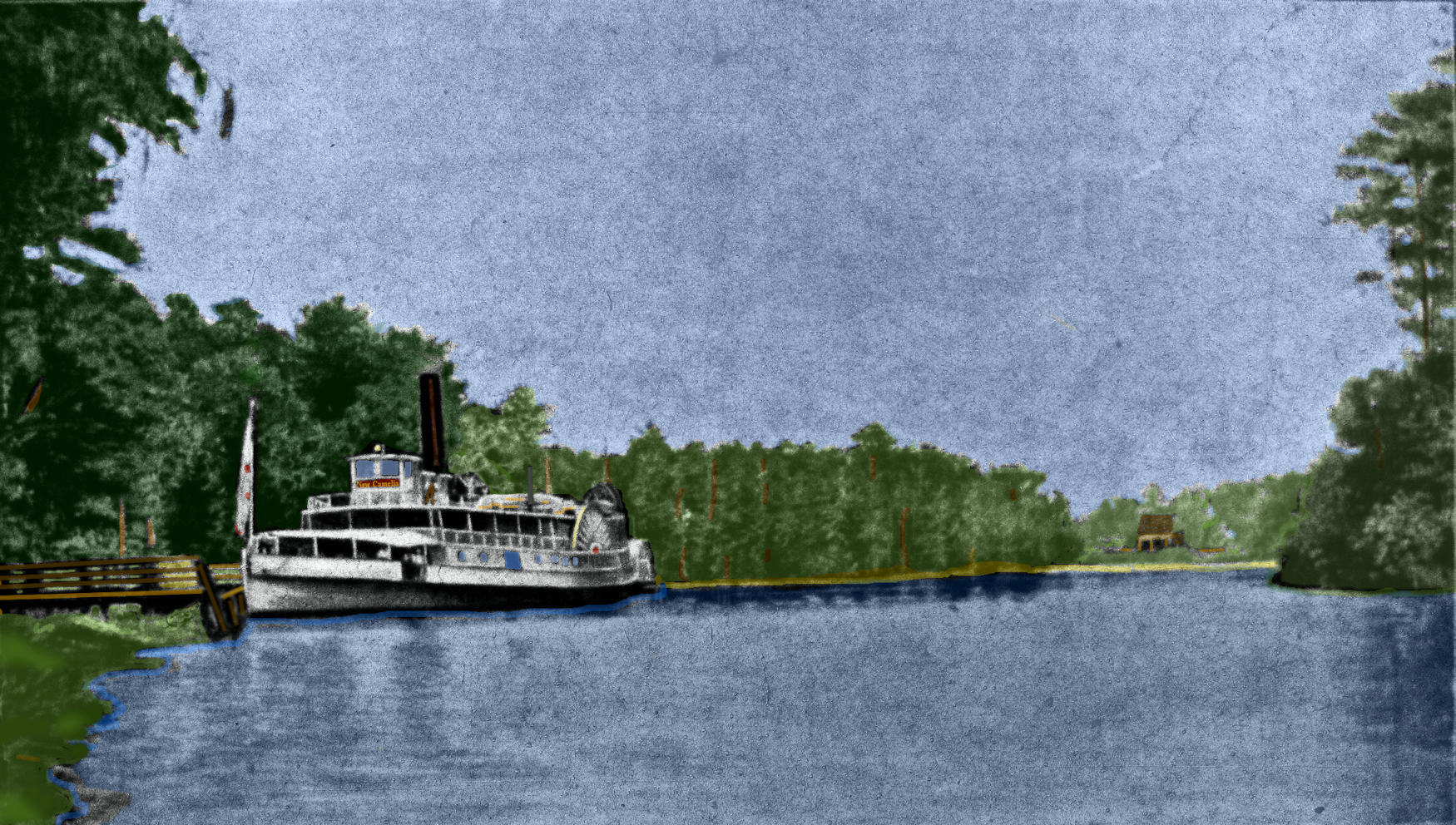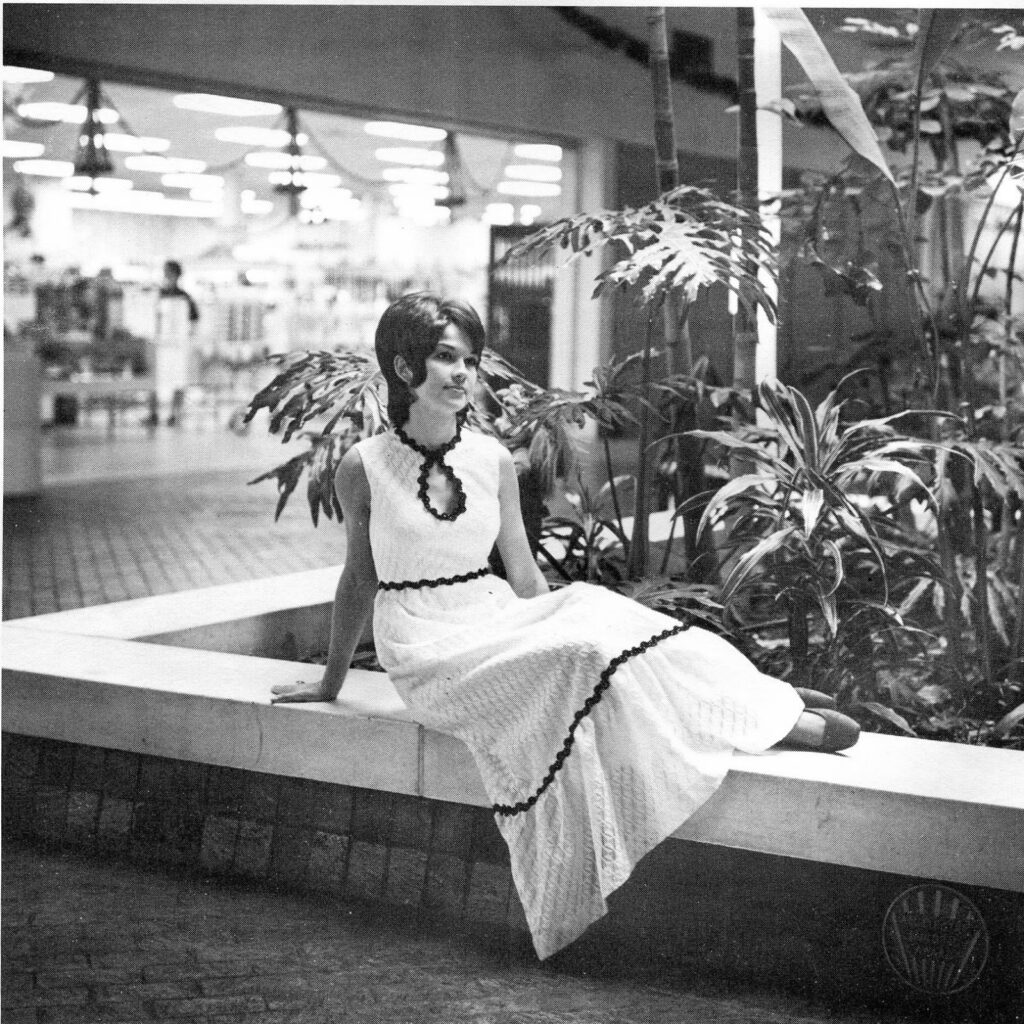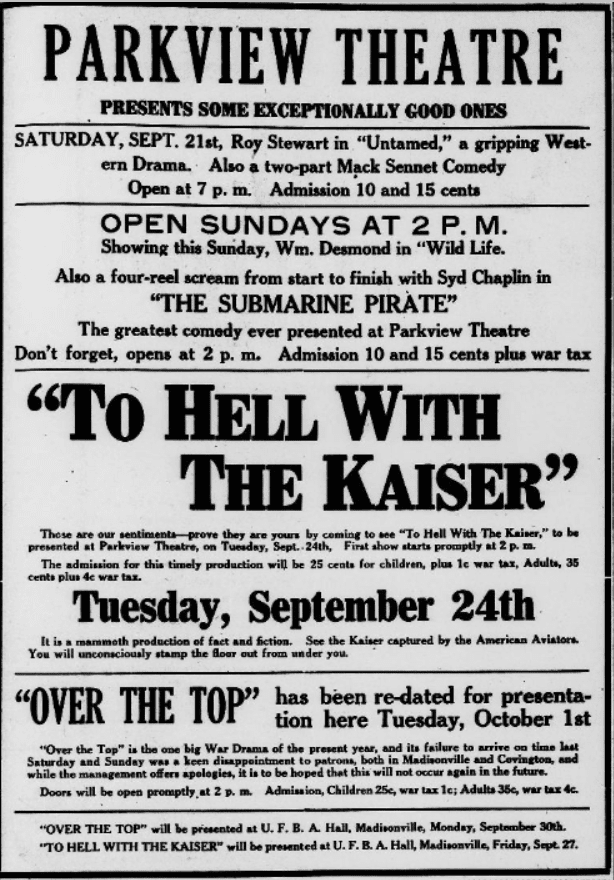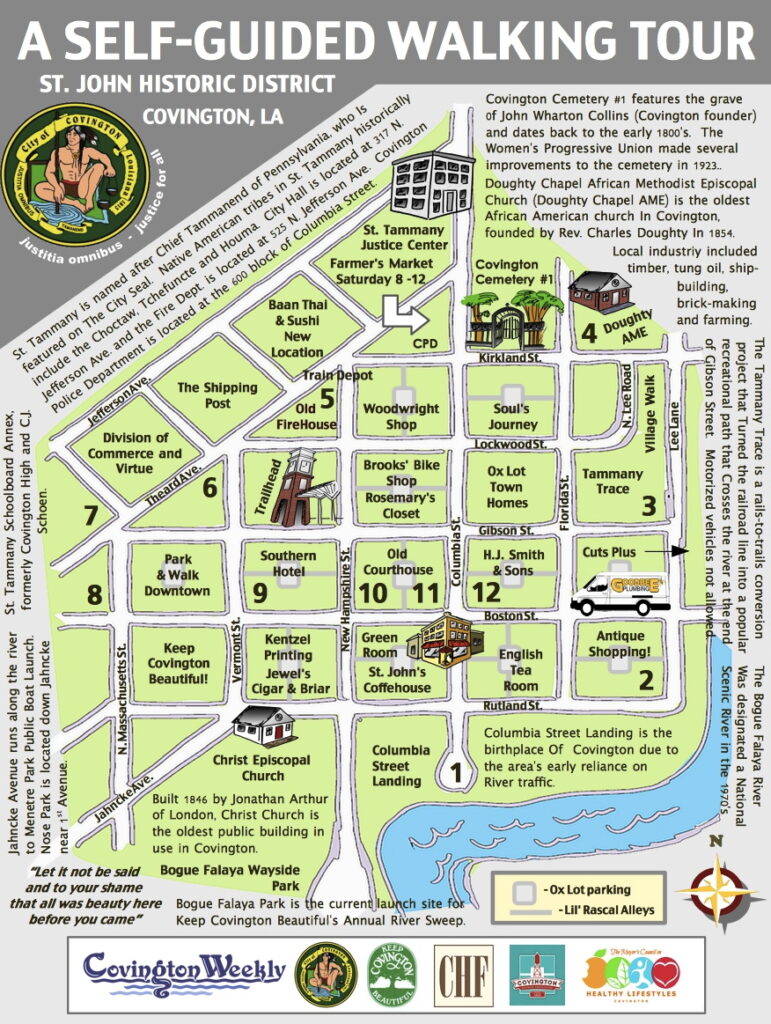
A Historical Walk-Thru of Downtown Covington, LA
by Chelsea Cochrane, February 8, 2021
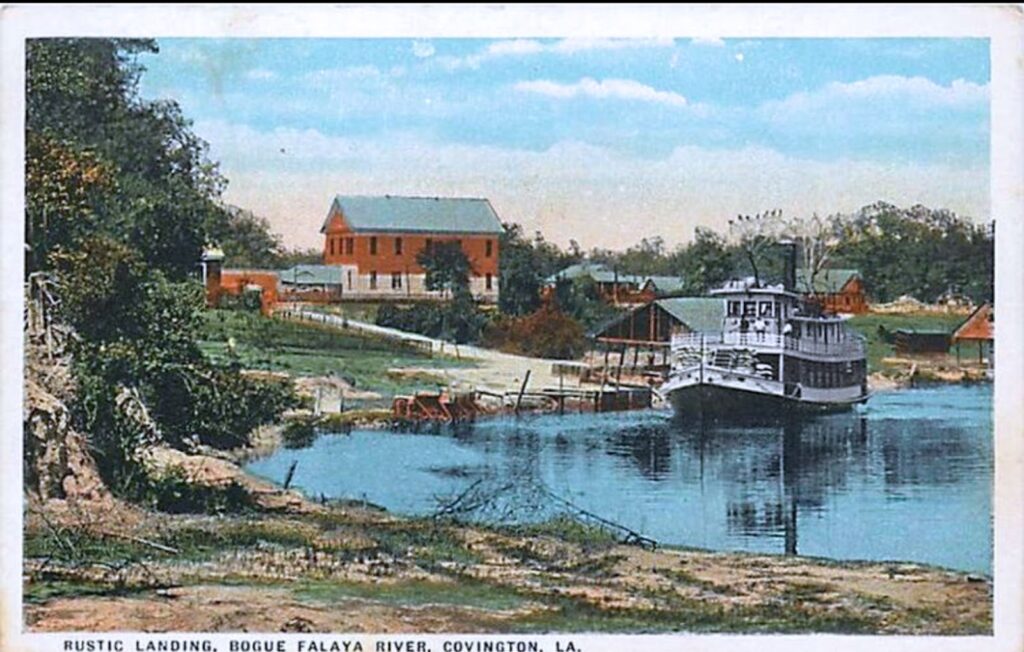
From its founding Covington was an important trade center, linking the river to the lake and New Orleans. Bogue Falaya river was dredged to allow schooners and steamers to travel between New Orleans, Madisonville, Mandeville and Lewisberg, up the river to and from the Columbia Street Landing. The dock was also a cargo port for goods brought down from as far as Mississippi, destined for New Orleans. Carts pulled by oxen would line Columbia street from the landing to the graveyard, dropping off imports and picking up supplies to bring back to northern landlocked towns. Boats would also bring visitors from New Orleans, anxious to experience the mineral springs and “ozone” air. In the 1850’s, Covington was considered the second healthiest place to live in the country due to the lack of incidence with common diseases, and many families settled to escape yellow fever and malaria outbreaks. Covington was announced “The Healthiest Place in the United States” by the the United States Census Bureau in 1890.

Covington’s rich history cannot be explored without mentioning its magnificent trees, many of which predate the town itself. Covington is a long-standing participant in the Arbor Day Foundation’s Tree City USA, largely due to the work of the Keep Covington Beautiful organization. Several historic trees have been noted in the area, including some of the moss-draped oaks along Rutland Street.
Rutland, which follows along the river’s bank, is likely an ode to Covington’s British past. St. Tammany Parish was left out of the original Louisiana Purchase and was actually a part of the British colony of West Florida. Due to its positioning and access to rivers, Covington made a convenient refuge for many troops during several different conflicts, including British loyalists during the Revolutionary War. Some local historians postulate that our Rutland Street was named for a Lord Rutland of England.
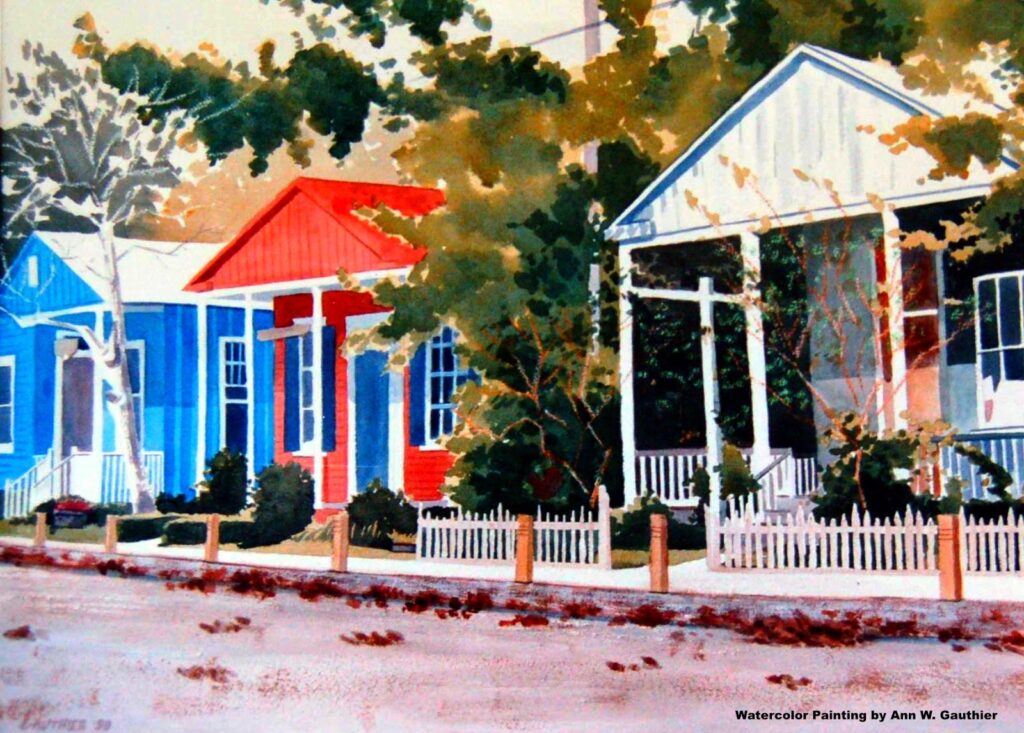
Strolling down Lee Lane, you will find many eclectic shops tucked in quaint Victorian cottages, restored in the 1970’s. Many of these historic houses feature original gingerbread trim and balustrades popular in Victorian style architecture. Ancient oaks and crape myrtles line the street. Among the many memorable businesses that have inhabited Lee Lane is the Kumquat Book Store, opened by Ann Moores, the daughter of the late Walker Percy. Walker Percy was a local fiction novelist, best known for his philosophical plots set in and around New Orleans, such as The Moviegoer, which won the US National Book Award for Fiction. A statue stands in his honor at the Bogue Falaya Park. Across Boston Street on the northwest corner is the original location of the St. Tammany Farmer, one of the longest running businesses still based in Covington, founded in 1874.
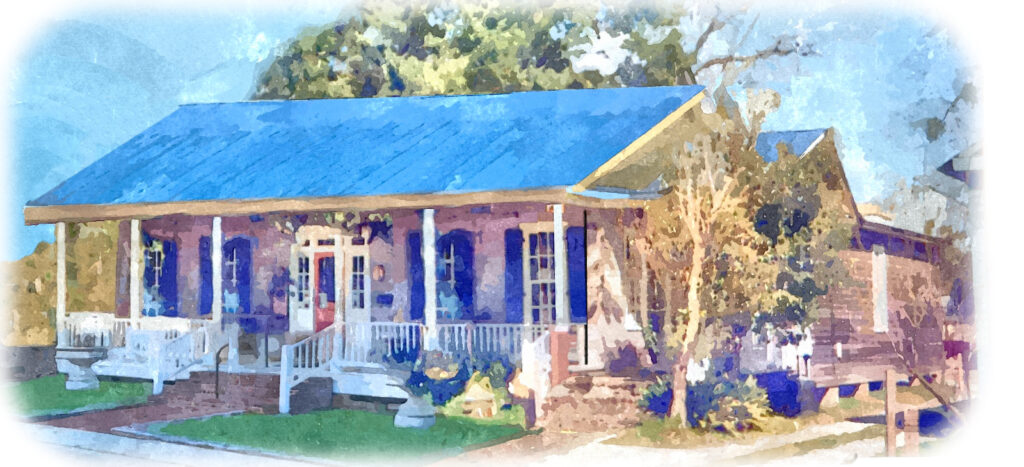
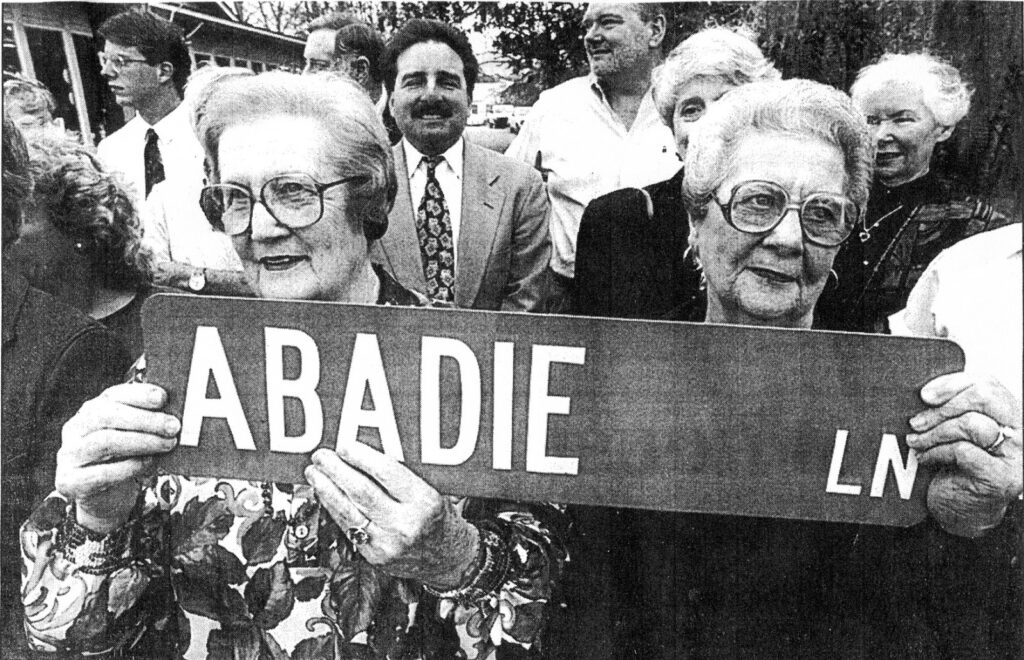
On the opposite side of the street is Abadie Lane, designated in 1992 to honor the Abadie family and their home. This illustrious family was a part of Covington history for over 100 years. The lane leads to the old Bogue Falaya bridge and was once the main entrance to Covington. Remnants of this old bridge can still be seen from the Trace.
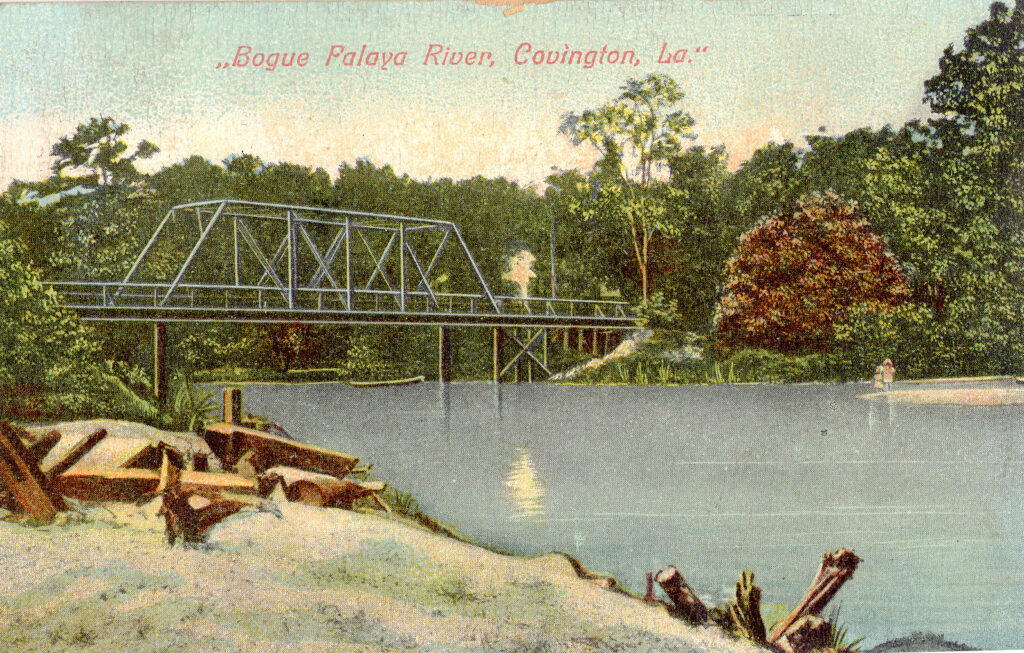
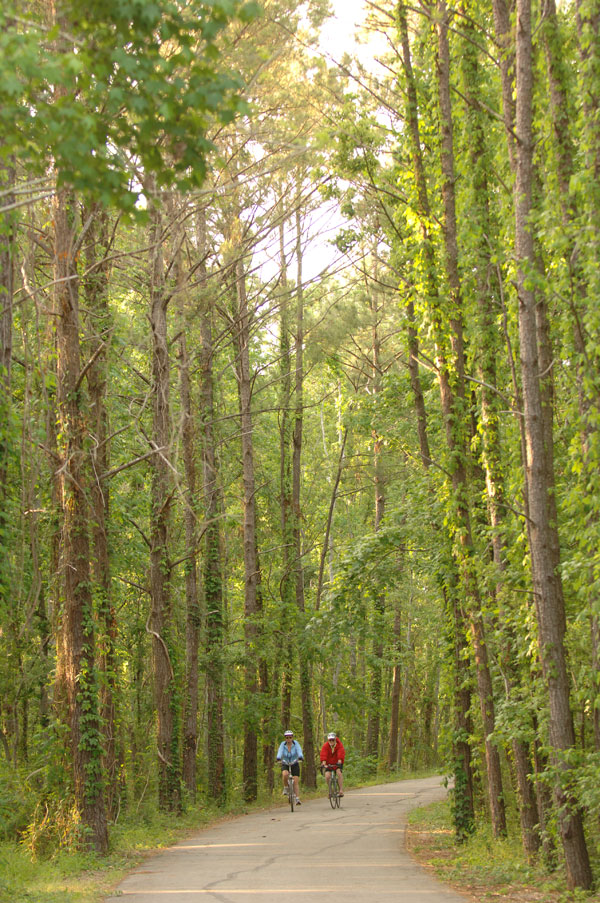
The St. Tammany Trace is over 30 miles of paved track going between Slidell and Covington. It is among the most successful “Rails to Trails” initiatives to convert old railways into scenic trails, opened in 1994. The Trace snakes through downtown Covington, following the old train route across a bridge over the Bogue Falaya, leading to Abita Springs. Walk, jog or ride this path connecting Covington to Abita Springs, Mandeville, Lacombe and Slidell.
Just past the Trace is the Village Walk area, once home to the Bogue Falaya Shopping Plaza. This all-indoor mall featured the finest comforts of the 1970’s, including clothing stores, shoe stores, restaurants, hairdressers, barber shops, a bank and a supermarket. It had a center courtyard with a reflecting pool and was host to many community events. Unfortunately the mall caught fire in 1984 and was torn down.

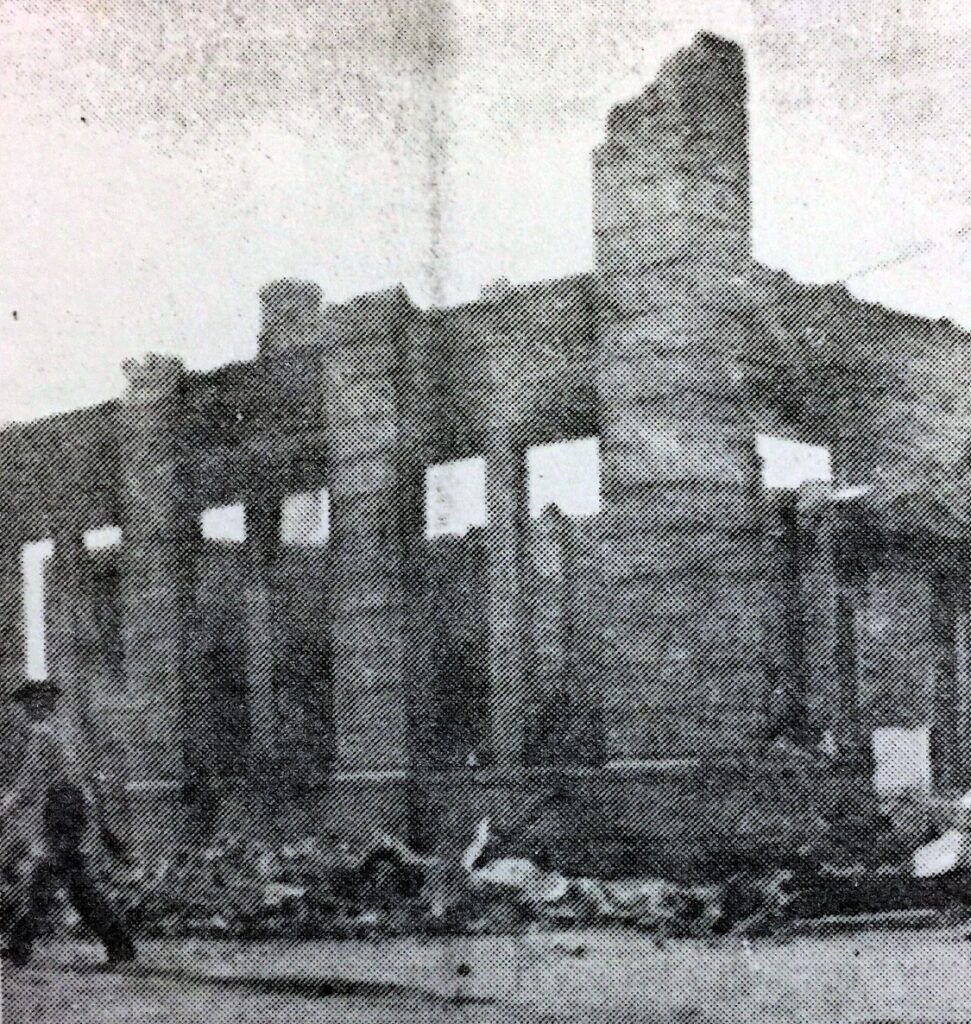
Downtown Covington’s central business district was altered by several major fires in the early 20th century. Between 1898 and 1920 blocks of Columbia, Boston, Rutland and Florida streets were damaged, destroying all of the original wood frame structures. The only surviving structures were those made of brick, and the extent of their damage and restoration is unknown. At the time most of the buildings in Covington were wooden, until the city changed their building permits process in 1905 for any structures costing over $50. Still, several other fires devastated the downtown area, leading to the creation of the Covington Benevolent and Fire Protective Association in 1908 and the purchasing of Covington’s first fire truck in 1909, at a cost of $750. A fireman’s parade in 1909 including several volunteer departments and companies led these organizations to unite and form the Covington Fire Department.

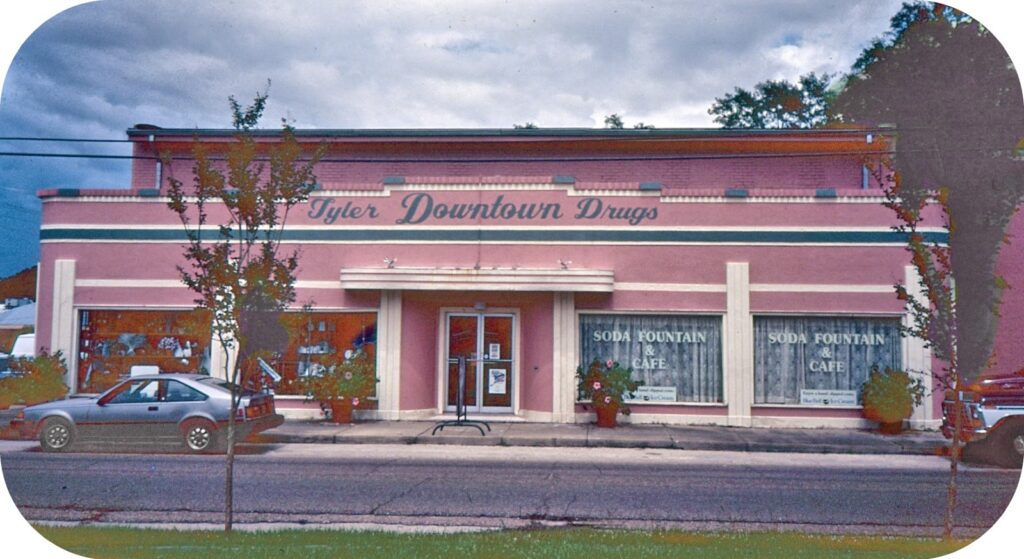
On the corner of Florida and Gibson streets is the old Covington Ice House, built in 1910. It later served as the D’Aquin’s Wholesale Grain Company building, until 1934 when Blossman Petrolane Gas Company bought it and gave it the modern exterior you see today. Afterwards it was home to Tyler Downtown Drugs in the 70’s and 80’s. The soda fountain still remains to this day.
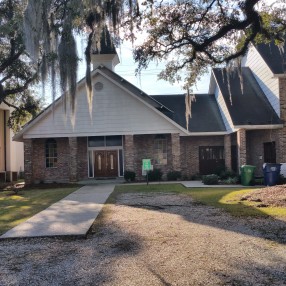
Just past Village Walk is a small extension of Lee Road this side of Collins Blvd. Here stands the Doughty Chapel African Methodist Episcopal Church, the oldest African-American church in Covington, still in operation to this day. The Doughty Chapel A.M.E. Church was founded by the late Reverend Charles Doughty in 1854.
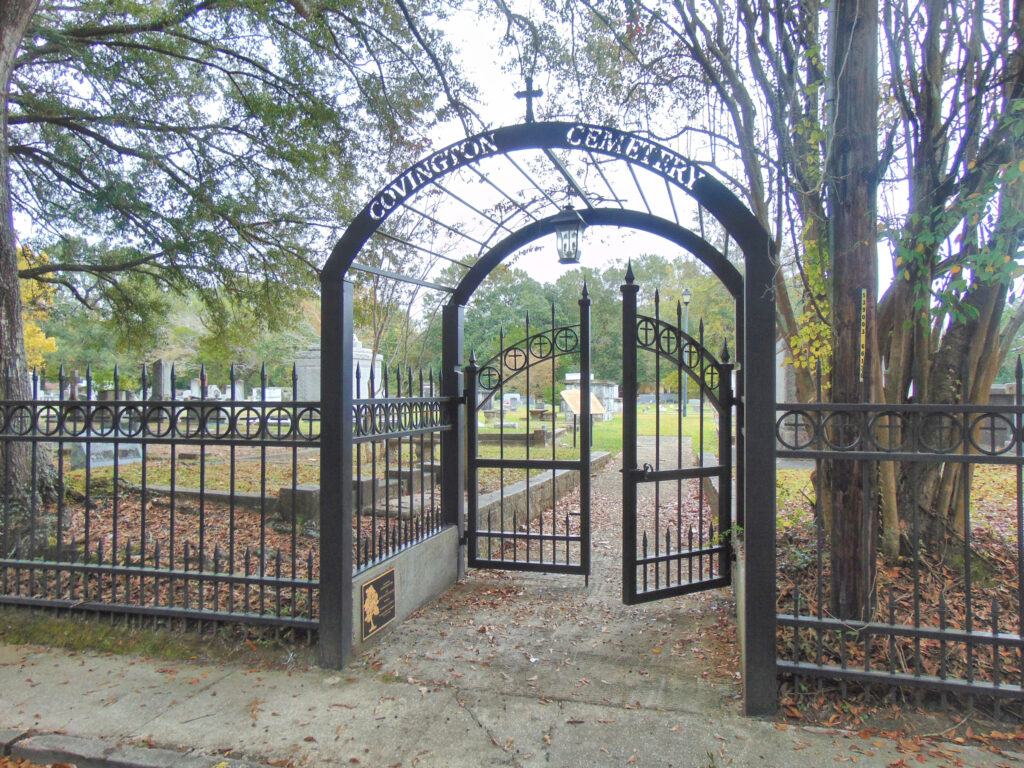
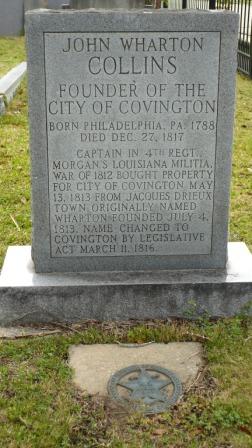
Covington Cemetery No 1 is located in the lot between Florida, Kirkland and Columbia streets. This spot was picked by Covington’s founder, John Wharton Collins, who is buried at the corner of Kirkland and Columbia. The official designation of the lot was done in 1822 by his widow, Marie Elizabeth Tabiteau, when her and her remarried husband John Gibson sold the property to the city for the purposes of a public burying ground. The two-block cemetery houses hundreds of graves and crypts, dating back to the early 1800’s. Though once noted for its pristine upkeep, the cemetery property fell into disrepair sometime in the end of the century. By 1913, a local Women’s Progressive Union undertook the challenge of restoring and updating the property. The iron fence, paved walkways and concrete and brick canal running through the cemetery are all products of their work.
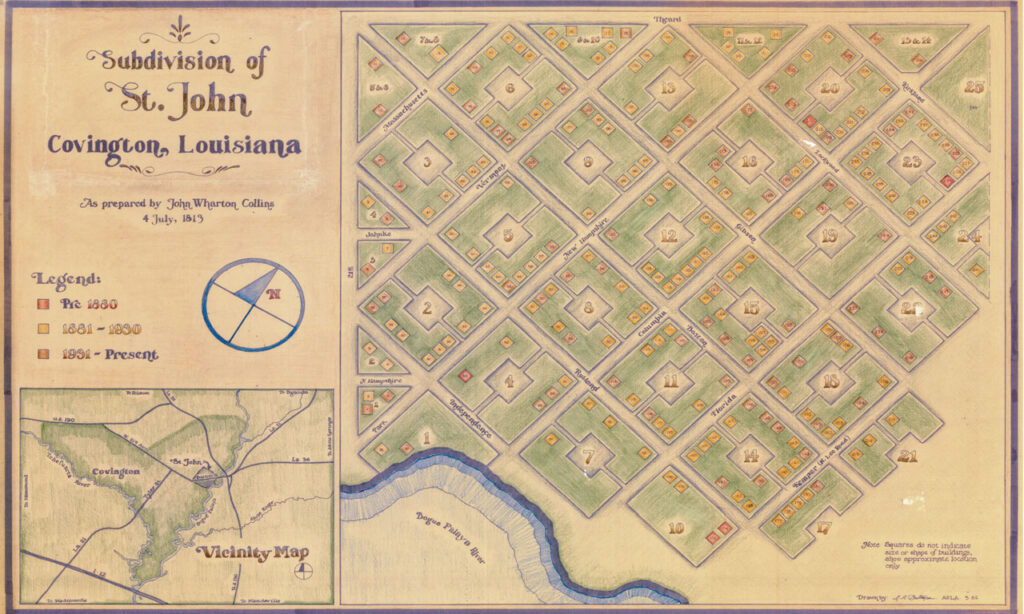
John Wharton Collins bought the land that would become Covington from Jacques Drieux in May of 1813. On July 4th of that same year, Collins had a portion of this land subdivided into what he called the Division of St. John of Wharton. The unique plan for the town layout included plots inside of the blocks set aside for public use, accessible by alternating alley-ways. These lots were eventually used to house the oxen and carts of tradesmen off the main streets. This “ox lot” layout, maintained to this day and used for public parking, is part of the quirky charms of Covington that earned us a spot on the National Register of Historic Places. The town was granted an official charter by the State of Louisiana in 1816, but they changed the name to Covington, much to Collins’ dismay.
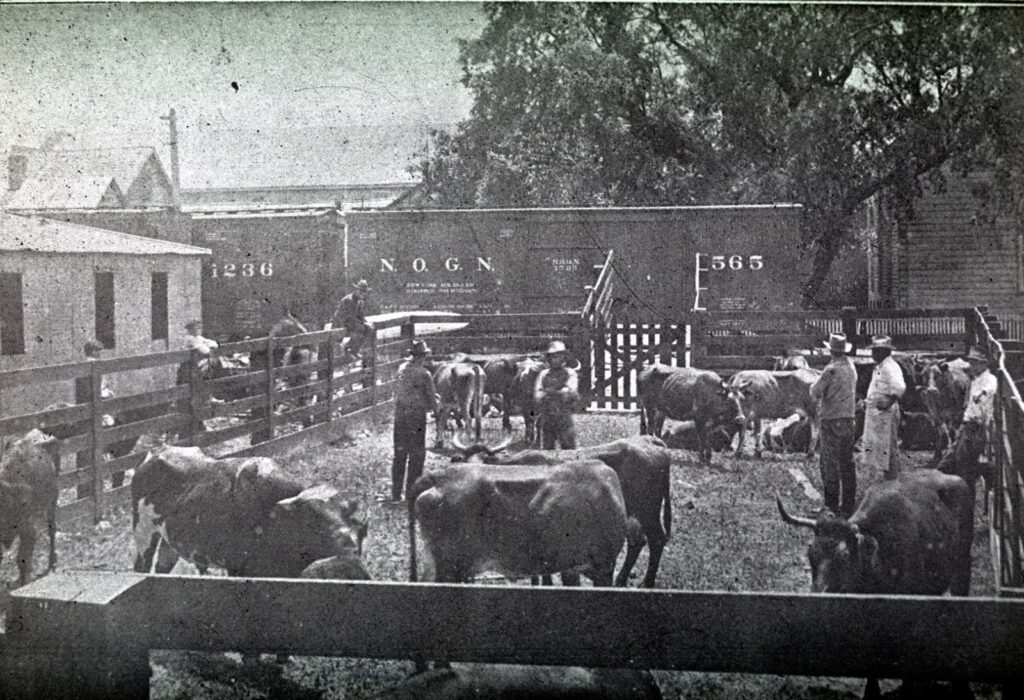
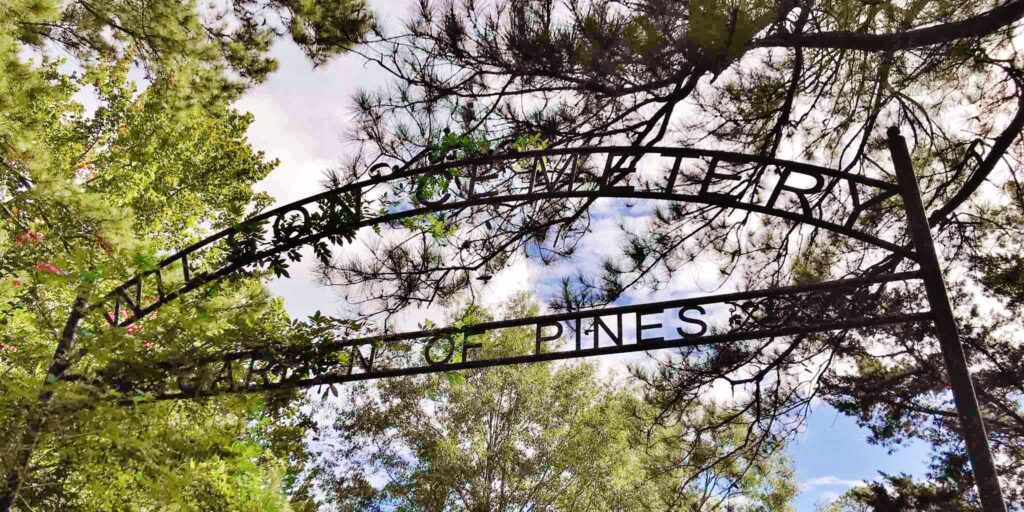
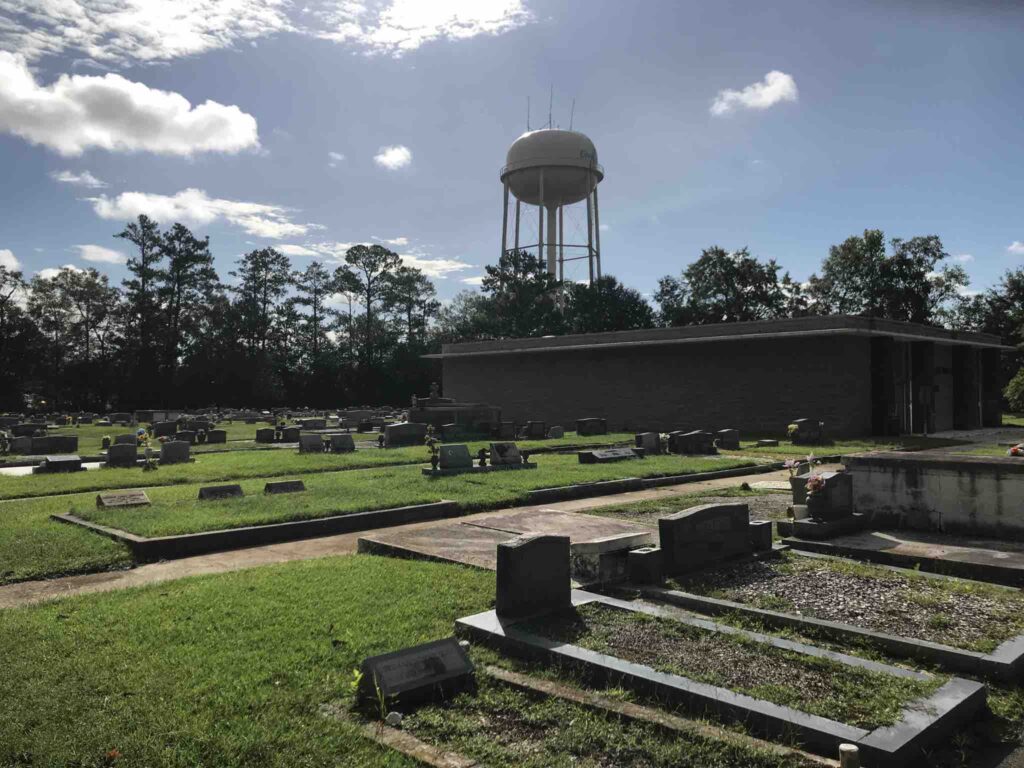
Covington has two cemeteries, the second being Wilson Covington Cemetery No 2 further down Columbia street. The land was bought by the City in 1919 for the purpose of creating a cemetery, but plots on the property date back as early as 1890. Originally called Covington Cemetery No 2 or simply the new cemetery, it is unclear when it became known as the Wilson Cemetery. Local rumor speculates that a Mr. Joseph Wilson may have donated land to some extent for the graveyard, but there is no evidence that he or his family were ever buried on the property. The cemetery features a sprawling landscape with many large trees and hundreds of graves. It is home to the City’s Garden of Pines Mausoleum, added in 1959.
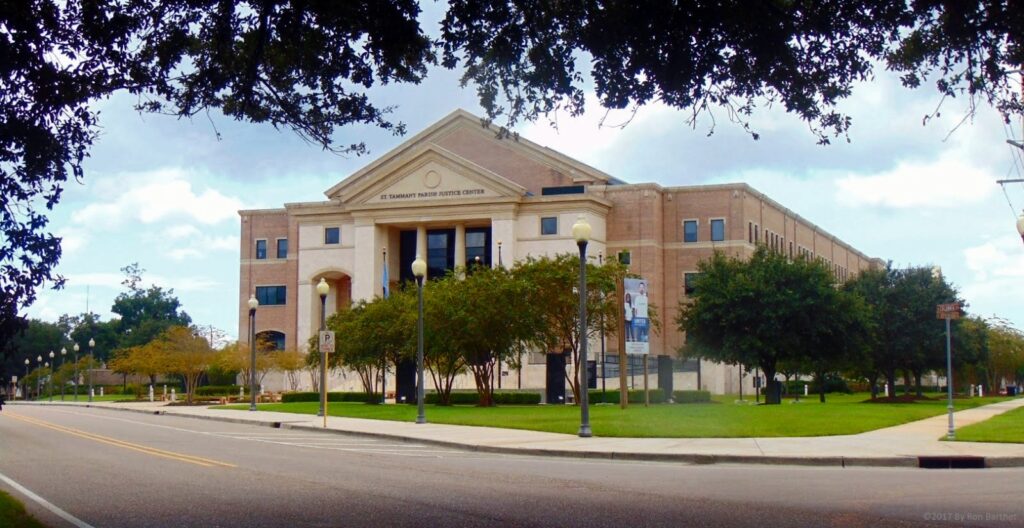
Continuing down Kirkland Street we see the City Council Chambers and the Covington Police Department to the north. The side yard next to CPD is home to the Covington Farmers’ Market every Saturday from 8 am – 12 pm. Beyond that is the St. Tammany Parish Justice Center, new home to the Parish seat courthouse. This massive 312,000-square-foot structure, housing 12 courtrooms and various parish offices, was first opened in 2003. It sits on the property that was once the P&W Salvage yard.
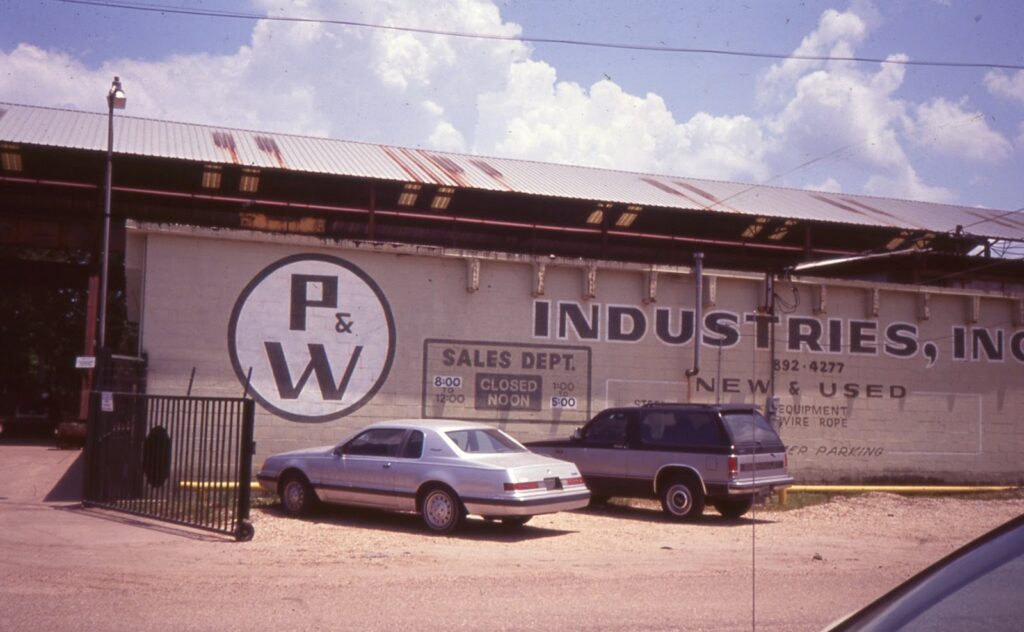

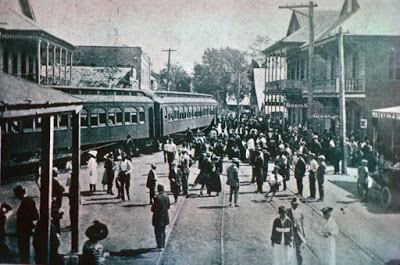
As we come up to Theard Street we run into the Trace again – this time running behind the old train depot. This was the second, larger depot, built for Covington in 1921. The original train depot was built in 1888, when the East Louisiana Railroad made its way to Covington. The coming of the railroad was an immediate boom to the local economy. Once a well kept secret hide-away from the big city, Covington was suddenly “on the map”. If you continue along the trace you can visit the historical marker near where the original depot once stood – on the corner of New Hampshire and Gibson streets. The track split in two here, one continuing in the curve through the corner of the block. The trace still follows this scenic path beneath a canopy of trees.
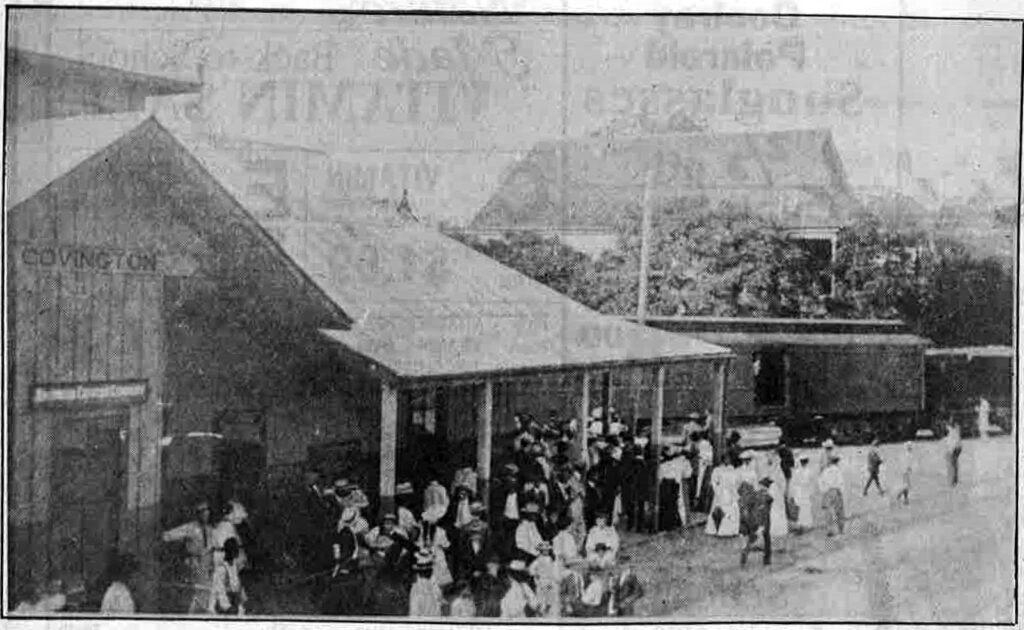
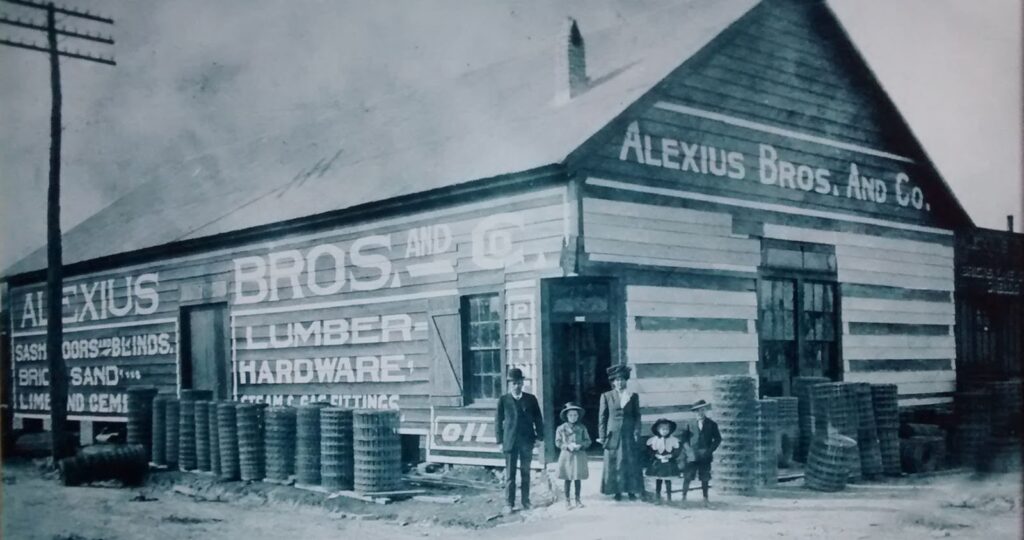
From left to right are Alfred, Olive Wadsworth, Selma Alexius Wadsworth, Alfreda Wadsworth and John Wadsworth.

Just west of the train depot across the tracks is the old Alexius Hardware building. Originally a gym and home to boxing matches, it was purchased in 1915 by Alexius Bros. Hardware and Lumber, started by Guido Alexius and his sons Alfred, Cintio and John in 1907. Later in the 20th century, Guido’s grandsons G.C. and Haller Alexius operated the hardware store at this location until 1985. The Alexius family also donated land for the construction of the Covington Trailhead. Check out the historical marker at this location! In more recent years this building housed two local breweries. It features a large, well insulated brick “dynamite room” once used to store explosives, which later served as an excellent place to keep fresh brews.
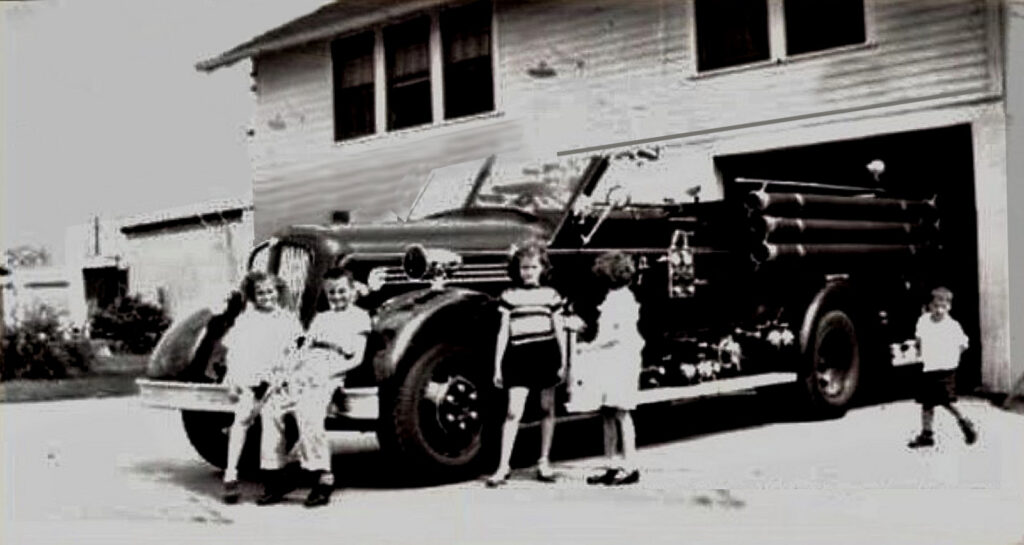
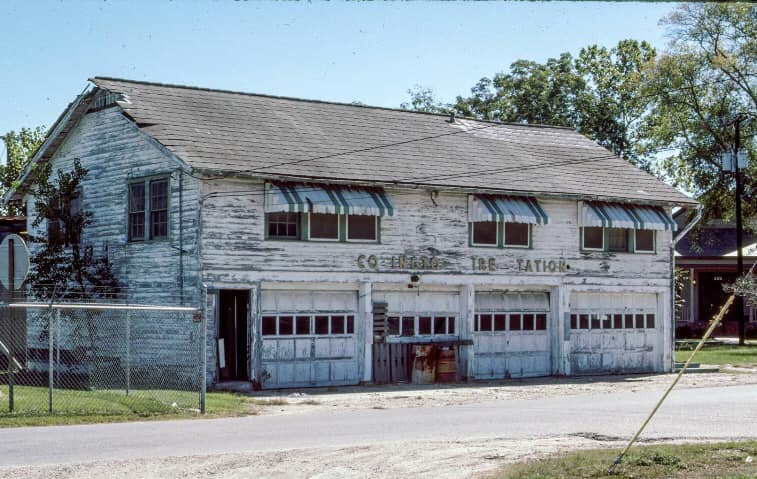
photo credit Doug Harrison
Just behind the Alexius property on Theard Street is the old Covington Firehouse. The original facility, built in 1940, was a two-story building which housed the Volunteer Fire Department and their Seagraves Fire Engine until 1972, when their station down the street opened. Newly renovated from scratch and reopened in 2019 as the Firehouse Events Center, it features wood salvaged from the 1940’s structure and the original red and white paint scheme that makes it a perfect setting for local events. Just behind it is the also recently renovated Covington Waterworks. Built in 1930, this stucco mission-style building features Spanish style architecture that is somewhat uncommon in this area.
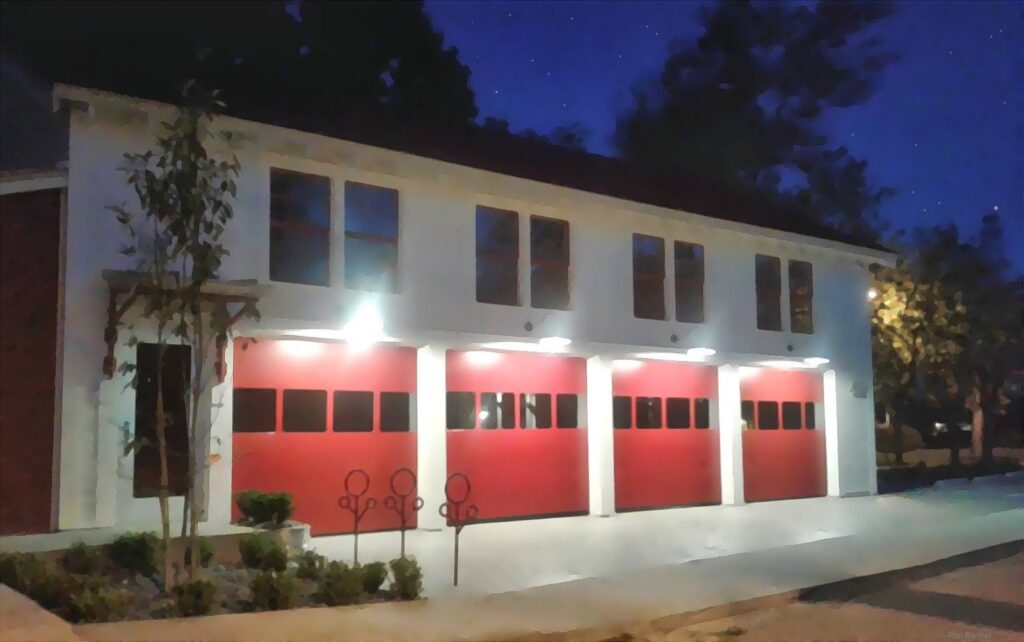
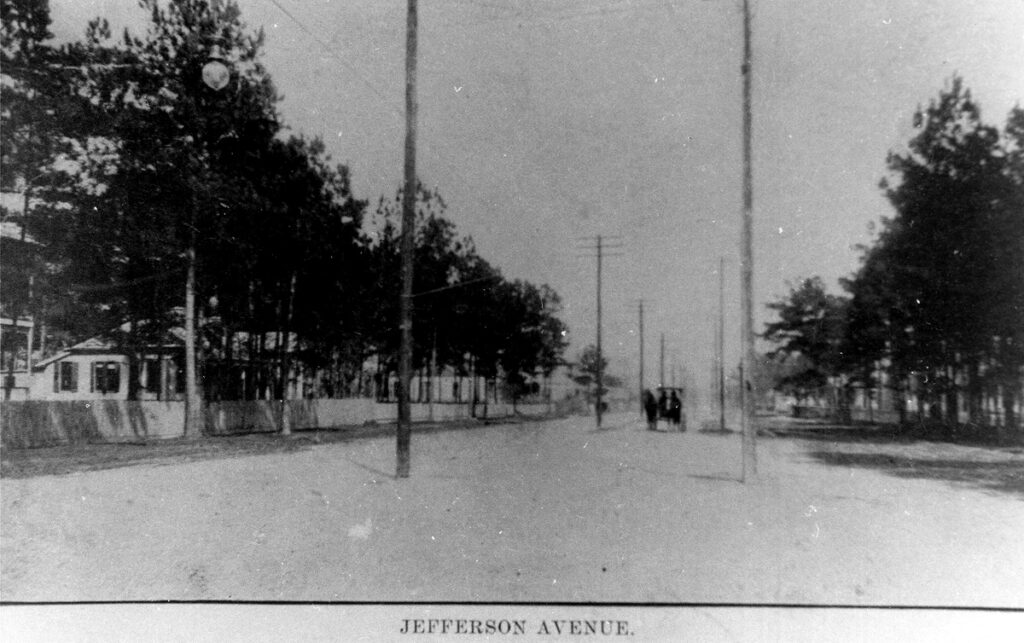
While North Columbia Street runs basically north to south, North Theard Street and the streets that follow jut out at a northeast angle. This area, laid out in 1813 as the Division of Morgan Commerce and Virtue, once featured a tree-lined neutral ground based on the same plan as Canal Street in New Orleans. In the late 1800’s several prominent businesses opened in this area, including St. Tammany Ice and Manufacturing Co., the Mackie Pine Oil Plant, and Covington Grocery Wholesalers. The Greater Covington Center is located on Jefferson Avenue, at the old location of the First Baptist Church, established in 1909. Between Theard and Jefferson sits the C.J. Schoen building, once the original location of Covington High, now the administrative complex for the St. Tammany Parish School Board. Built in 1914, it is the oldest building used by the St. Tammany School System. In the spring of 1947 Lee Harvey Oswald attended first grade at this location, then Covington Grammar School.

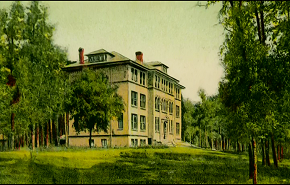
Covington High was not the first school in the area to offer high school education. In the early 1900’s less than 7 percent of the population continued their education past grade school, and St. Tammany had no public high school. Private schools filled the gap for those who could afford it. Several of these schools still remain to this day, such as St. Paul’s High, established as Dixon Academy in 1899. St. Peter’s Catholic School, established by the northshore’s oldest Parish, has history dating back to 1878. It was Benedictine sisters from St. Peter’s Parish that founded St. Scholastica Academy in 1903.
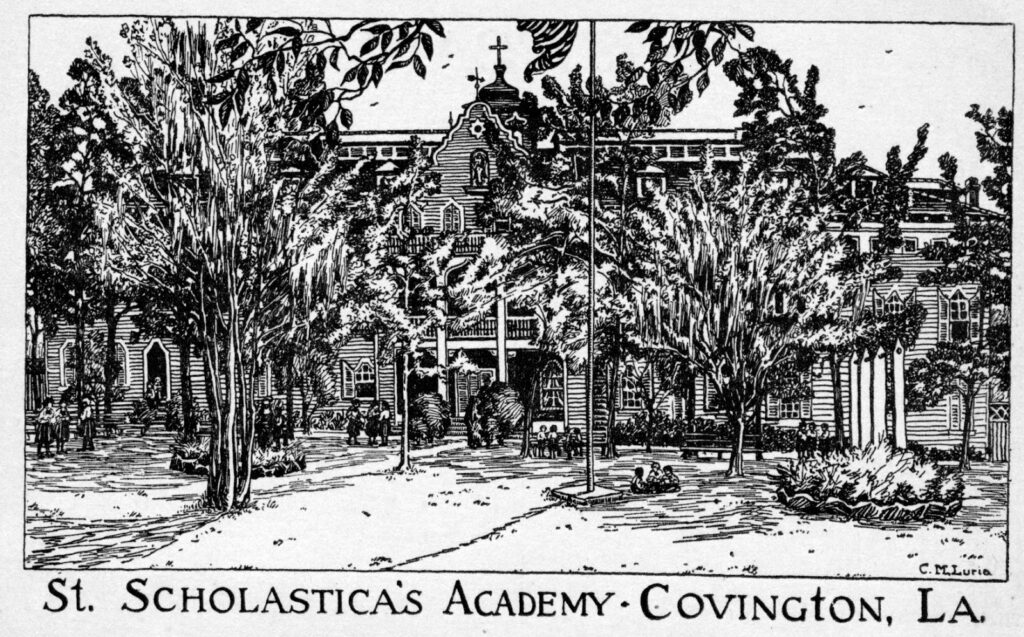
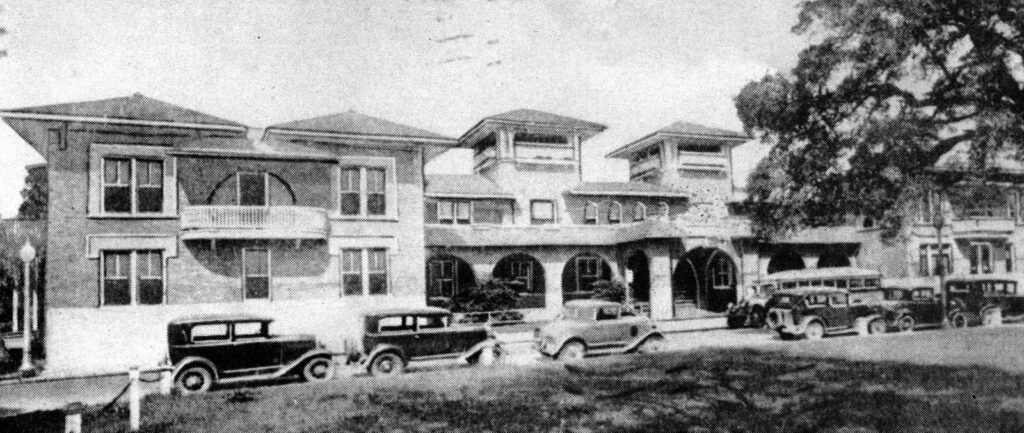

When the Southern Hotel on Boston Street first opened in 1907 it featured all the leisure amenities of the time, including electric lights and fans, hot and cold baths, steam heat and carpeting throughout its lavishly decorated 43 rooms. The opening was met with much excitement and fanfare. The hotel stood as a staple of luxury for years, turning into a sanitarium briefly in 1912.
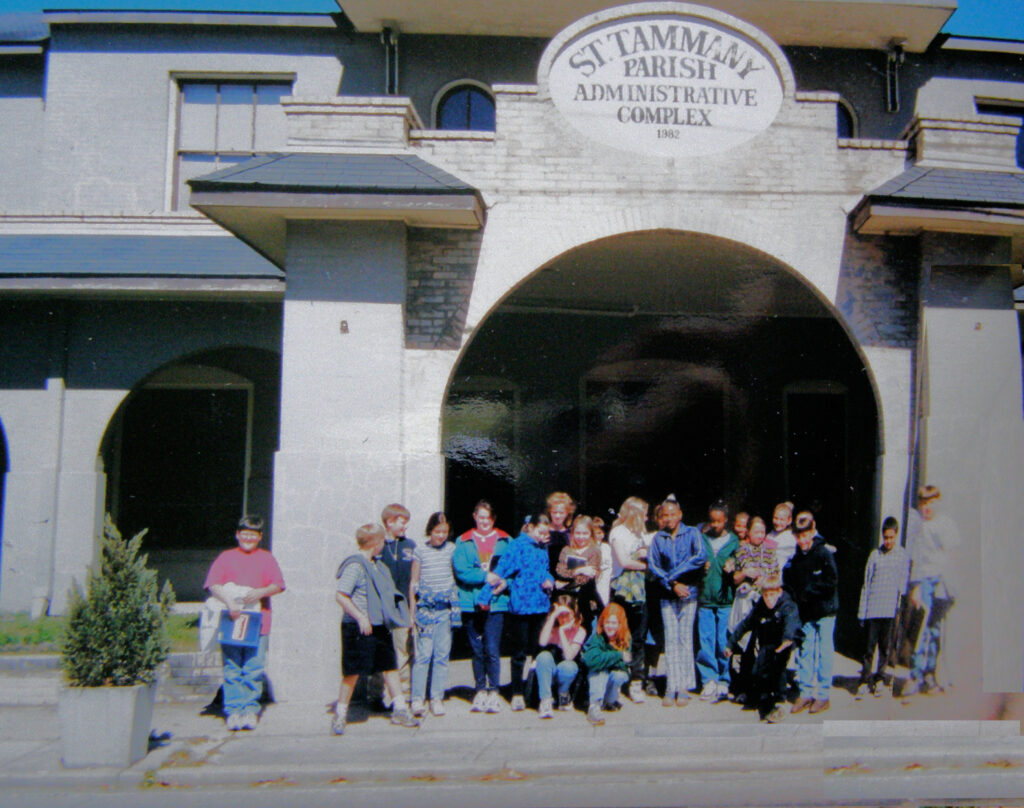
By the 1960’s however, the hotel had closed its doors and its bottom floor had been sub-divided into retail shops. St. Tammany Parish purchased it in 1981 and began construction to restore the building to its former elegance. As the Administrative Complex it housed several key government offices, including part of the 22nd Judicial Court. To this day it is believed to be the only building in the US which housed a courtroom and a full-service bar under one roof. Tugy’s, later called Tugendhaft’s Tavern, remained on the corner of the hotel building long after the courthouse had moved on to its new location.

After the Parish’s administrative offices left the hotel property once again fell into neglect, until 2011, when efforts began to restore it once again. This time it was to be brought back to its former glory as a luxurious boutique hotel. 107 years later (to the day) the Southern Hotel reopened in 2014 with equal excitement and greater amenities.
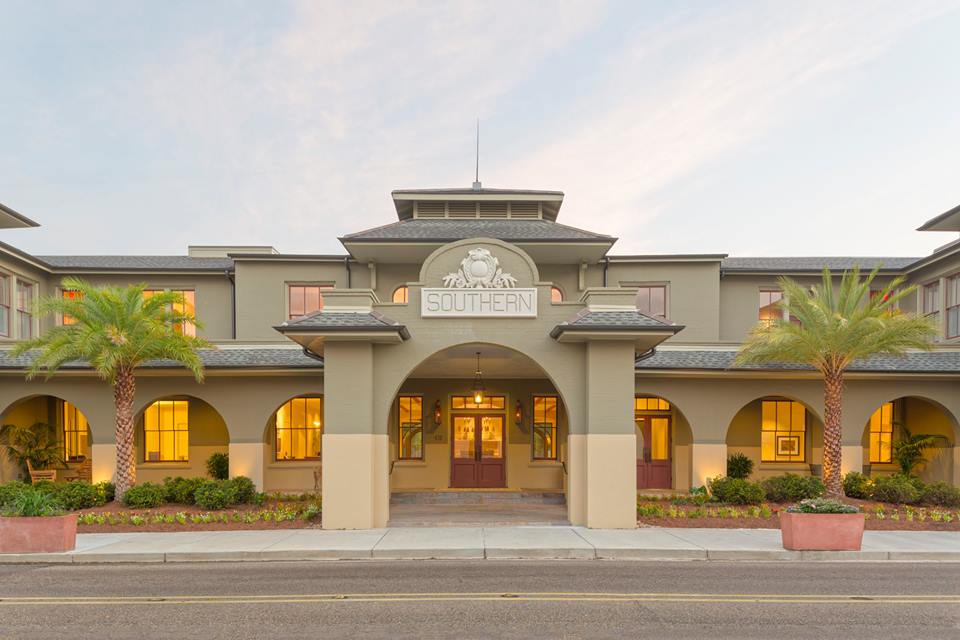
Next to the Southern (further west on Boston, on the same block) is the old Post Office building, built in 1937. It served as the School Board Annex building for 50 years, until it was bought and restored by the Southern Hotel into the “Garden House” suites and conference rooms, reopened in 2018.
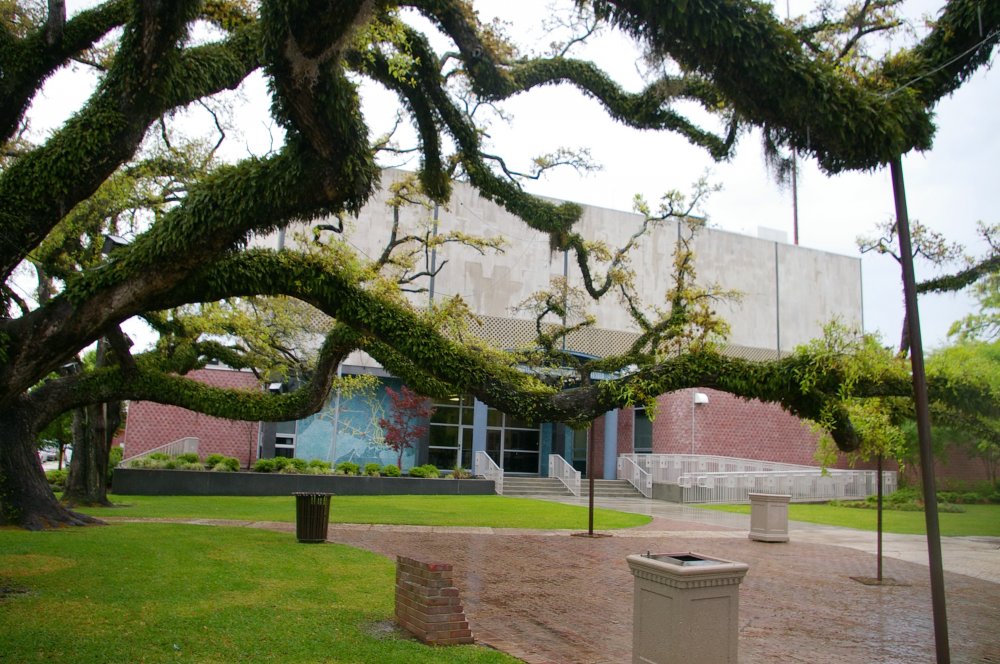
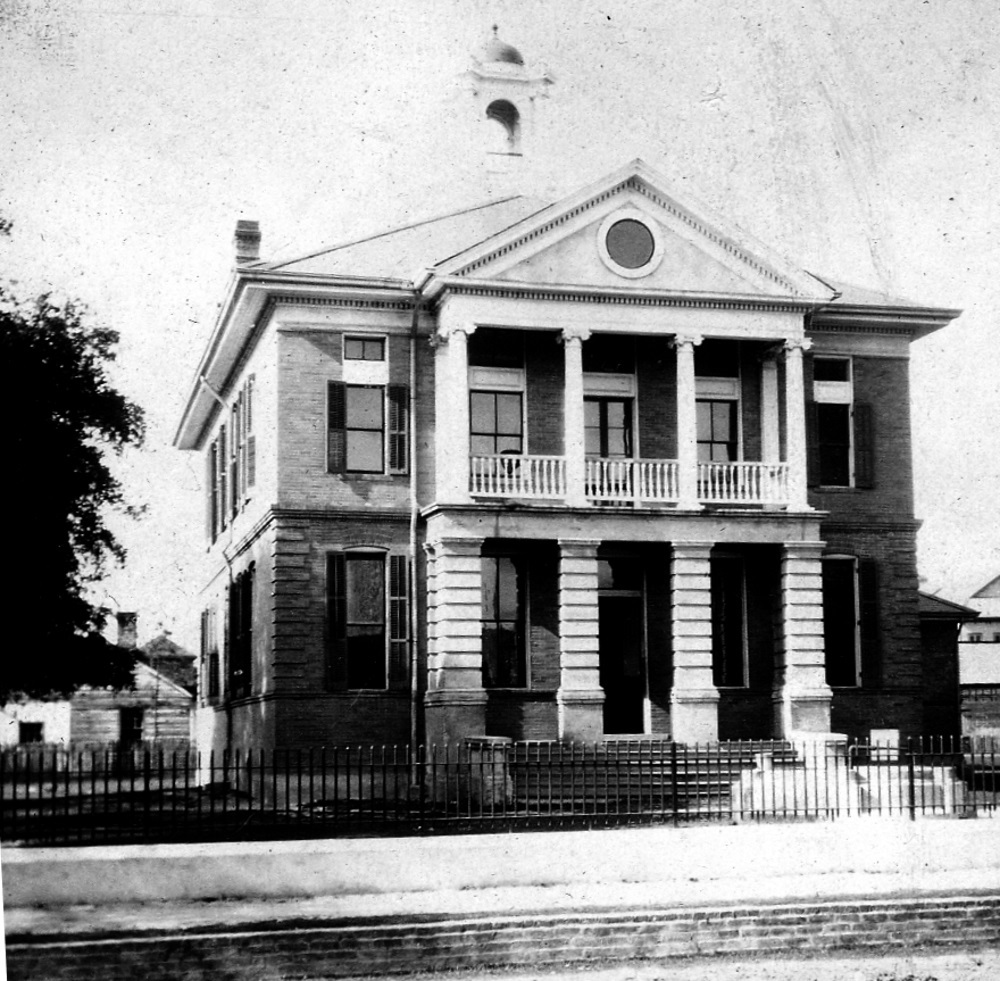
Just up Boston street is one of the original old courthouse locations, set back behind 250+ year old historic oaks that actually predate the street plan of 1813. This property housed the parish seat courthouse from 1838 – 2003. The original building was demolished and rebuilt between 1884 – 1896, then again in 1959. The current structure on this property is the 1960’s courthouse, with a cornerstone plaque commemorating the 1896 structure. As the parish continued to grow, many offices and facilities spread out in the area and neighboring towns, until the St. Tammany Justice Center opened in 2003.
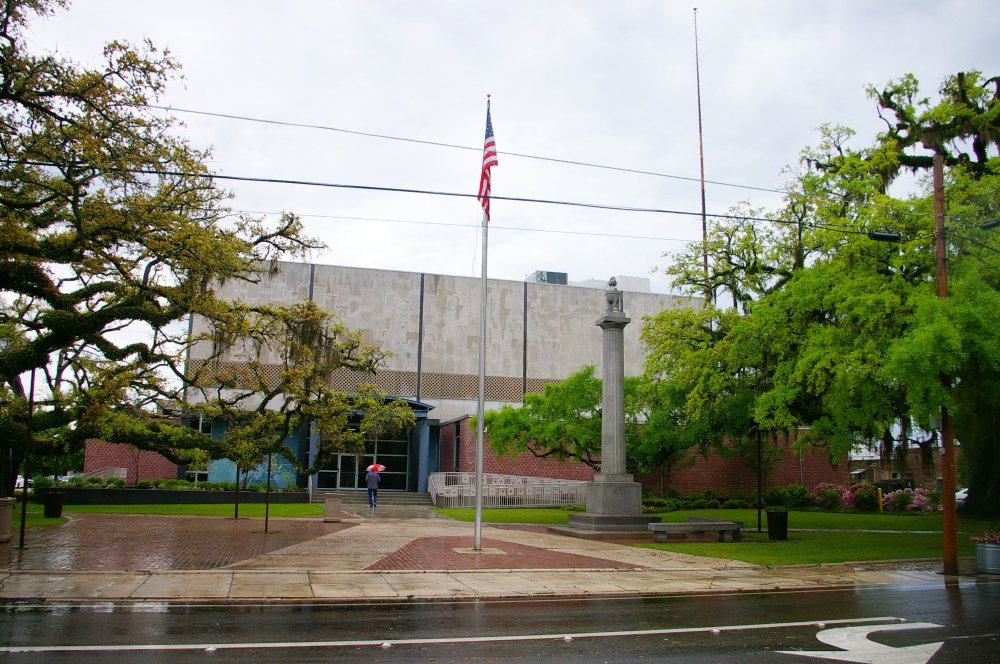
The old Boston Street courthouse site also features a WWI monument, erected and dedicated in 1920 and restored in 2010. Check out the Historical Point of View marker at this location!
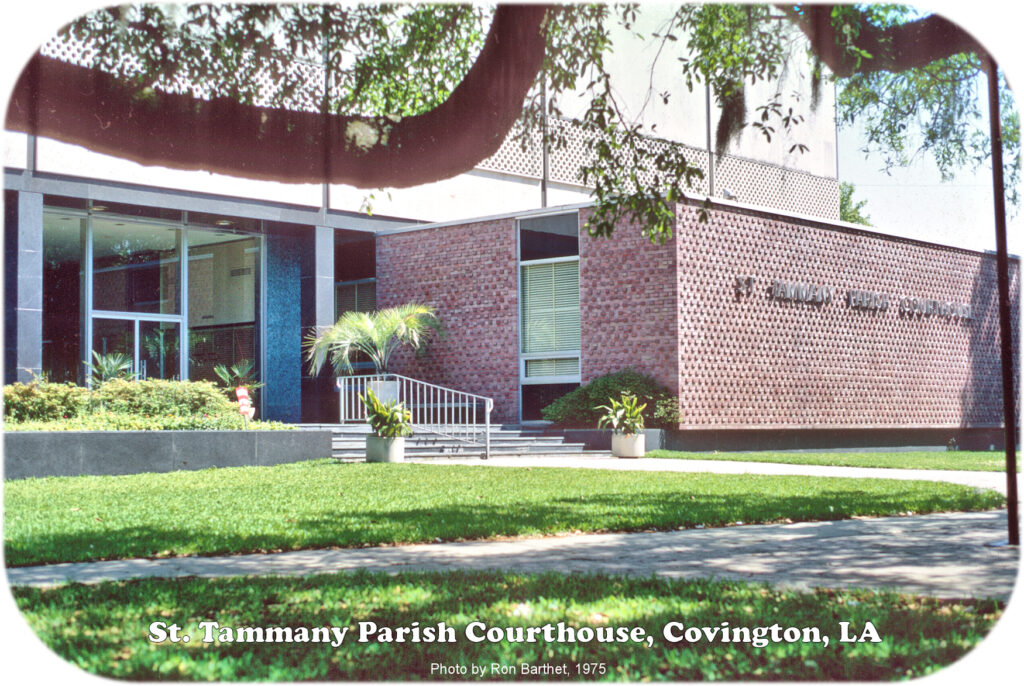

artwork by Florence “Winky” Chesnutt
Covington was not always the parish seat however – the original courthouse for St. Tammany, which once comprised Washington Parish and a portion of Tangipahoa, sat in Enon, Louisiana. As 1813 legislation dictated, the parish seat was to be “within three miles of the center of the Parish”. A few years later the Town of Claiborne, just across the river from Covington, was made the parish seat in exchange for building a courthouse and jail. This circa 1819 courthouse was in use until the seat moved to Covington in 1838, and still stands today.
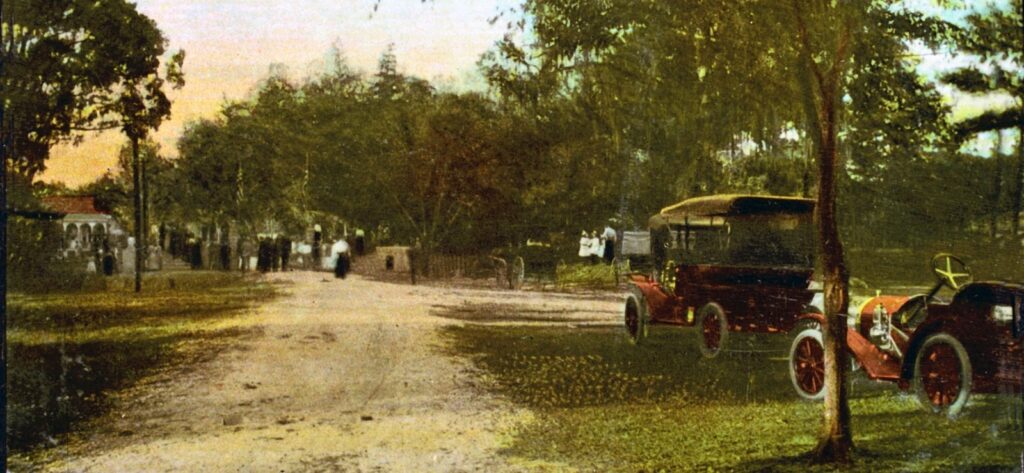
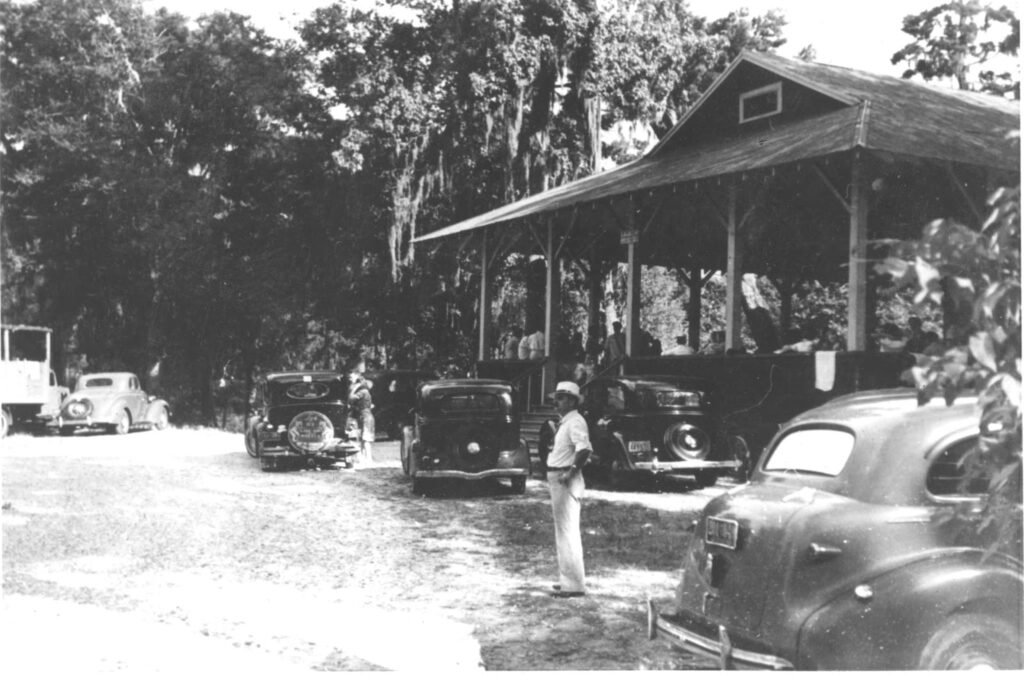
If you follow New Hampshire street down to Park Drive you will run into the entrance of the Bogue Falaya Wayside Park. Officially opened on July 1, 1909, this park is listed on the National Register of Historic places since 2017. The 13-acre plot is wrapped by the Bogue Falaya River and adorned with many native trees. A main pavilion constructed in 1915 replaced the original pavilion that was destroyed by floods. Recent development to the property includes a new boat launch and plans for a handicapped-accessible playground addition. The brick pillar entrance gates were first donated in 1920 and restored in 2007, along with their original historical marker. According to historical preservationist and former councilwoman Patricia Fuhrmann Clanton, these pillars are topped with actual cannonballs. Mrs. Pat Clanton, a third generation native of Covington, was instrumental in revitalizing Bogue Falaya Park as well as the Columbia Street Landing park.

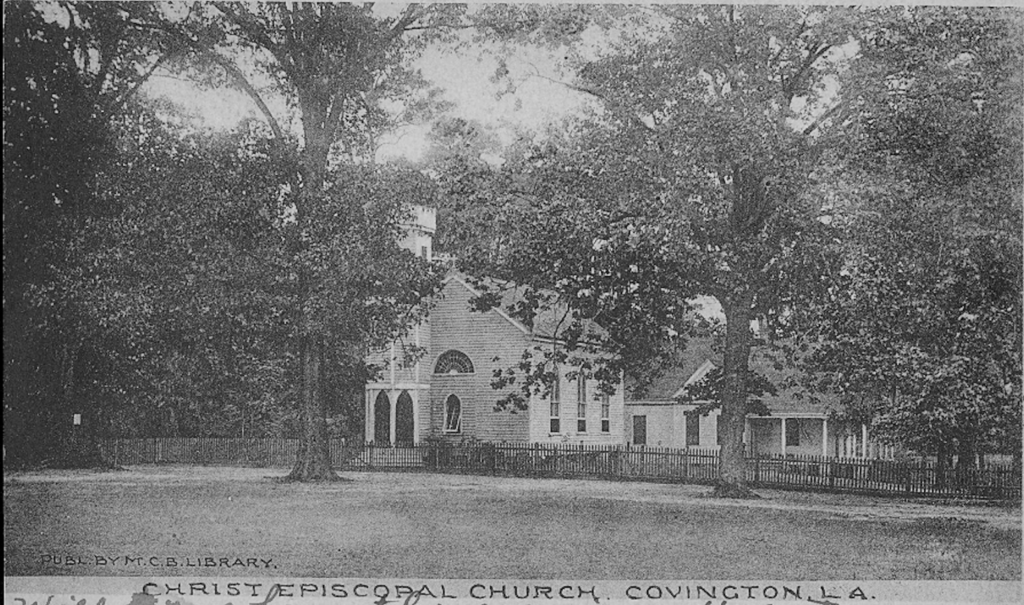
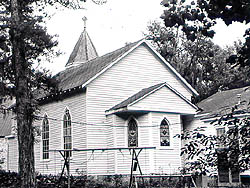
On the corner of Park Drive and New Hampshire Street, in the triangle that is formed between the two, is Christ Episcopal Church. Built in 1846, it is the oldest building still in continual use in St. Tammany. It is noted for both its historical and architectural significance. Across New Hampshire to the north (131) is the location of the Bogue Falaya Mens’ Club, built in 1903. It was purchased by a women’s group, Minerva’s Chosen Band or MCB, and turned into Covington’s first lending library in 1907. The Mackie House, set back off the street behind a white picket fence, was built in 1877 and was the former residence of John Wharton Collins, Covington’s founder. It was later home to the Mackie family of Mackie Pine Oil. Many historic homes and sites can be found down these roads following the Bogue Falaya River, set aside in the original city planning as the “Division of Spring”.
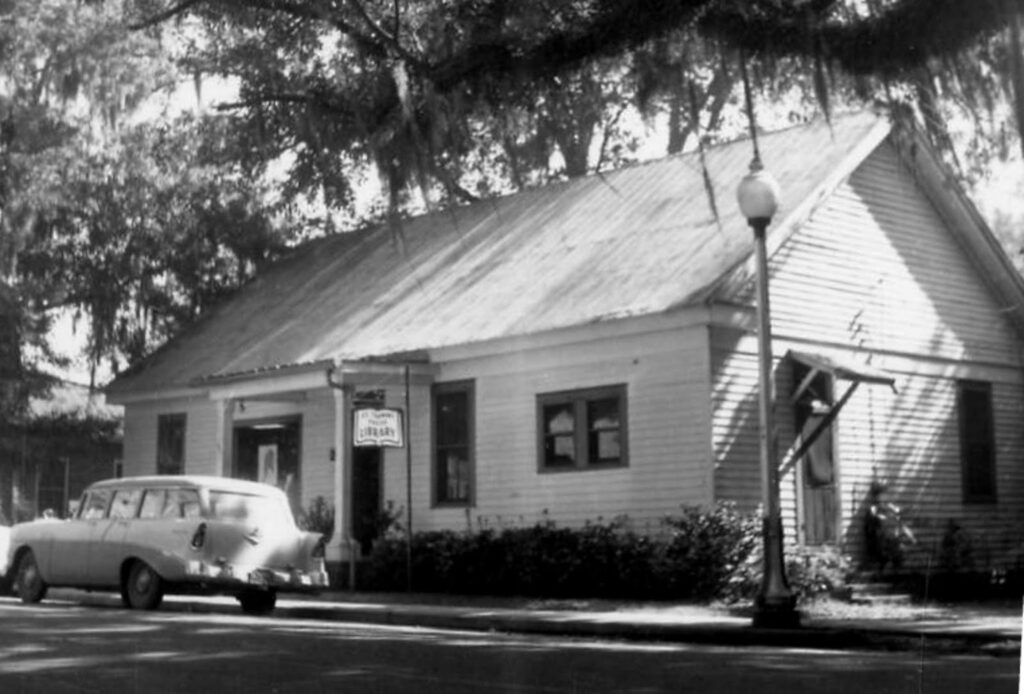
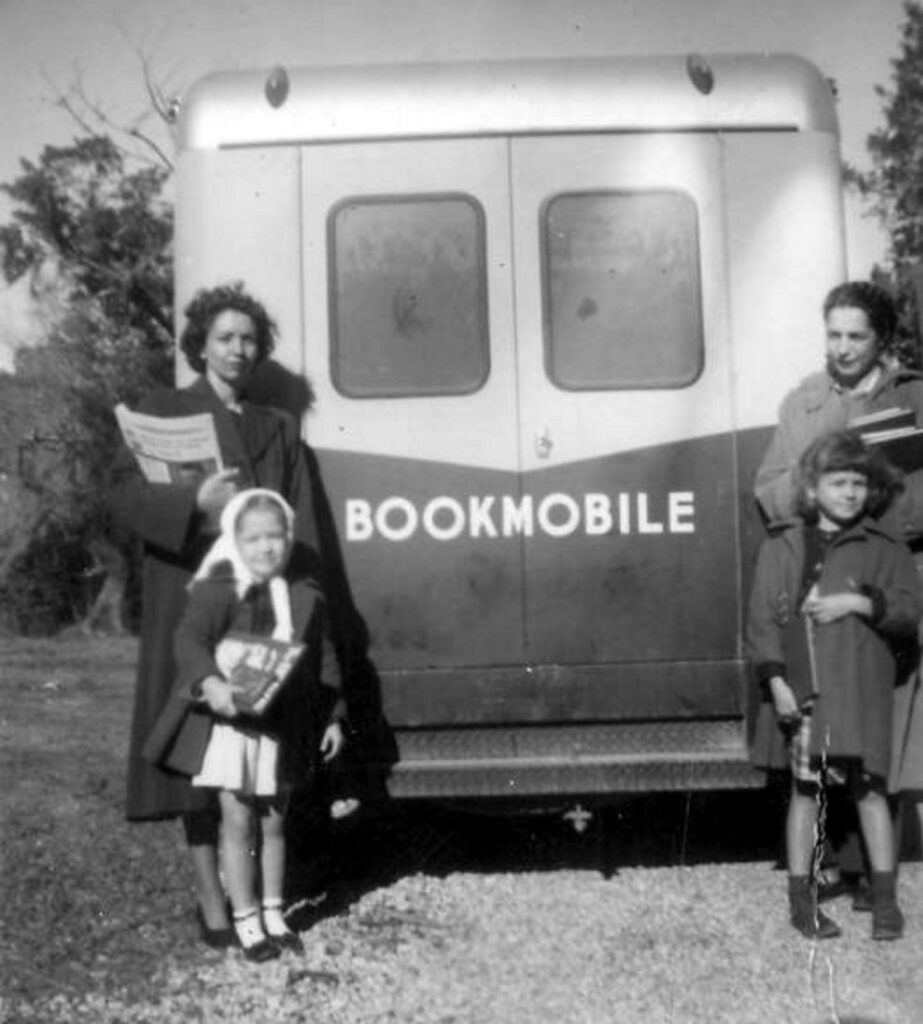
St. Tammany’s first public library was also in Covington, opening in 1950 as the 32nd public parish library in Louisiana. Soon after public libraries began popping up in towns all over the parish, and a “bookmobile” brought the joys of reading to more rural areas. Covington was also home to the parish’s first African American library, the J. S. Clark Branch, opening later that same year.
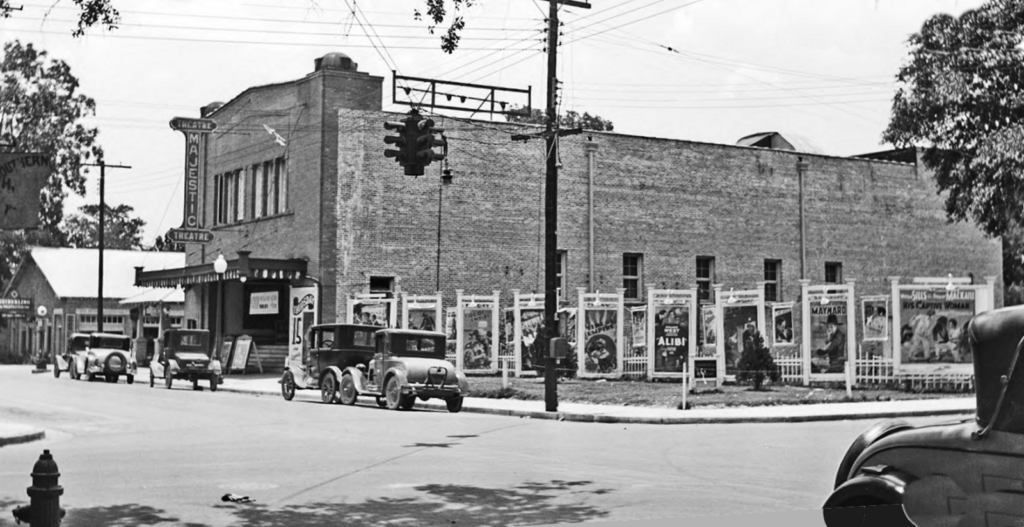
Covington had a very theatrical history, and New Hampshire Street was the heart of its theater district. Moving pictures came to Covington as early as 1907 with The Covington Electric Theater. At its height there were several theaters along this street alone, and many of them were opened and operated by Sidney “Sid” Fuhrmann. This included the Parkview (1914, 501 E. Boston, on the corner of New Hampshire), The Majestic (c1926, 221 New Hampshire), and the Deluxe Theater (c1941, 407 New Hampshire). The Star Theater (c1942, 332 New Hampshire) was owned and operated by the Salles family.
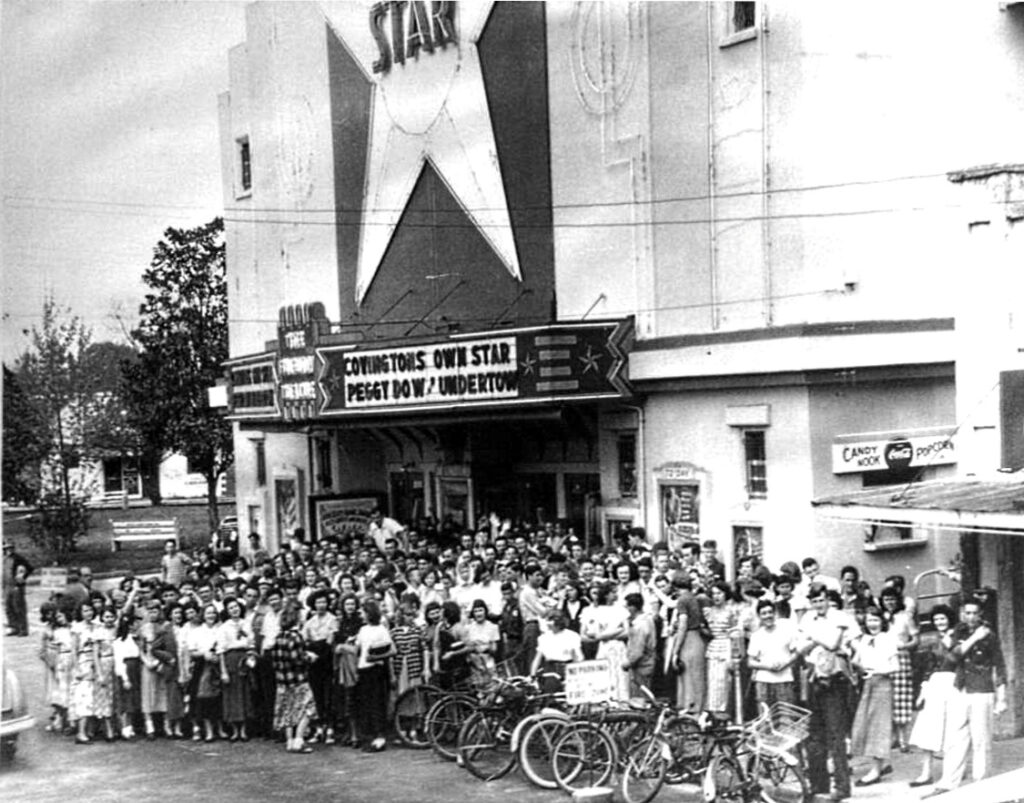
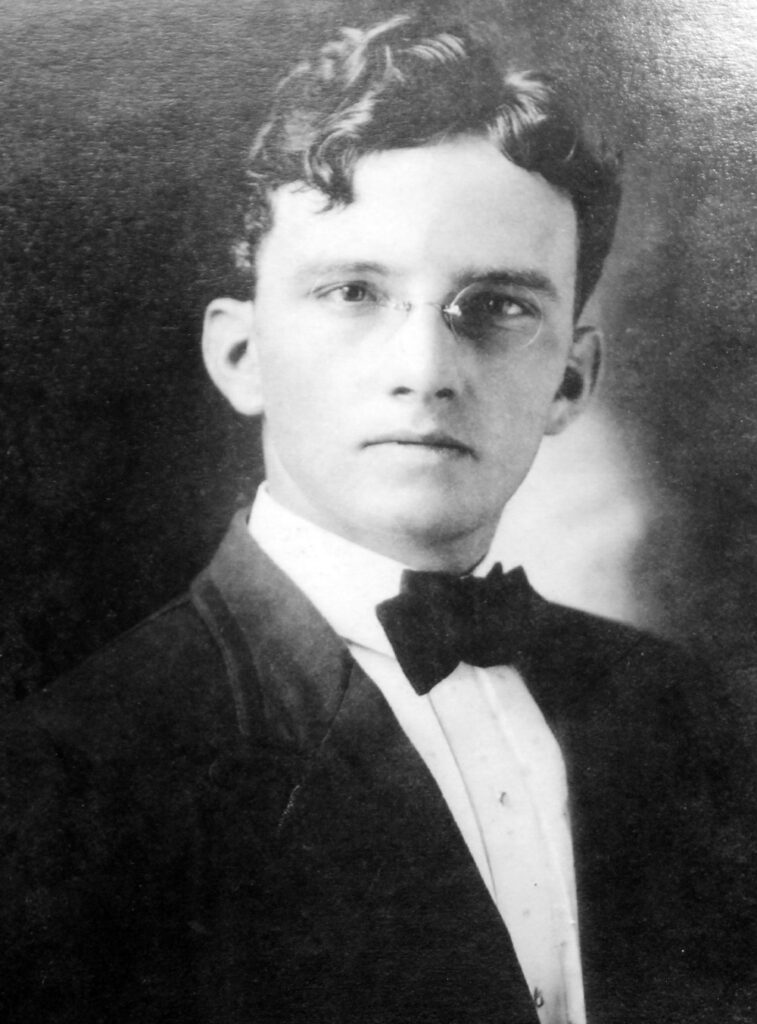
Charles Sidney August Fuhrmann (1890 – 1963) was an entrepreneur, artist, theater enthusiast, and even owner of a winning semi-pro baseball team. He opened his first theater, the Parkview, at age 22, and did all of the mural art himself. He was commemorated for his artistic contributions to the community with the dedication of the Fuhrmann Auditorium, a 450 seat acoustically balanced theater that hosts numerous live performances and community events. The Fuhrmann Auditorium is located in the City’s Greater Covington Center on Jefferson Ave.
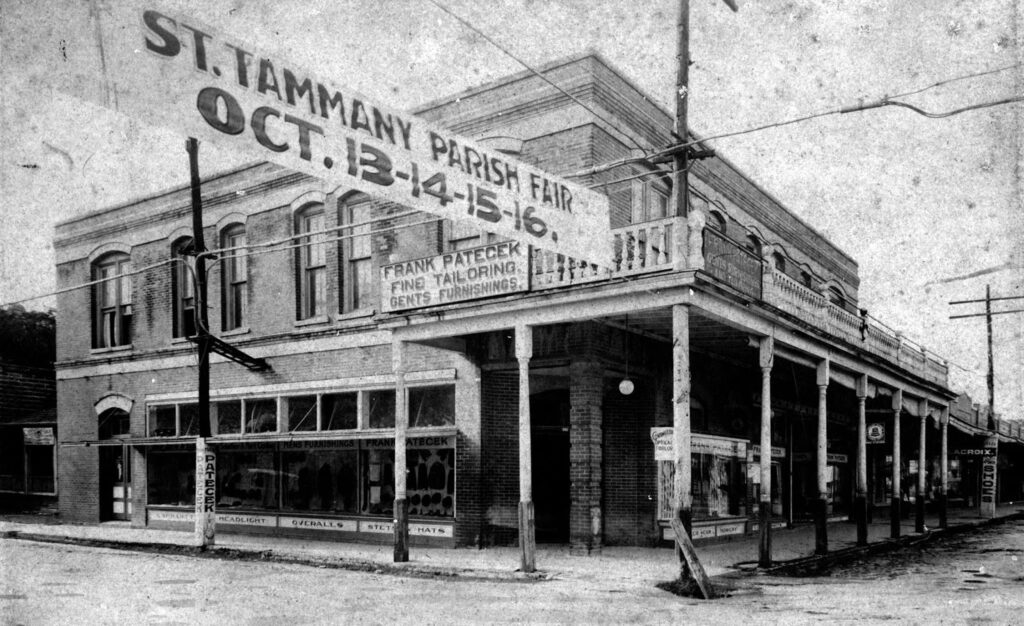
The corners of Columbia Street and Boston have a wealth of history between them. These Italianate style commercial buildings are all built around the turn of the century. The Patecek or Wehrli Building on the northwest corner was built shortly after the Great Fire of 1898 by Frank Patecek, a prosperous local merchant. The second floor was once the location of Covington’s first telephone exchange.
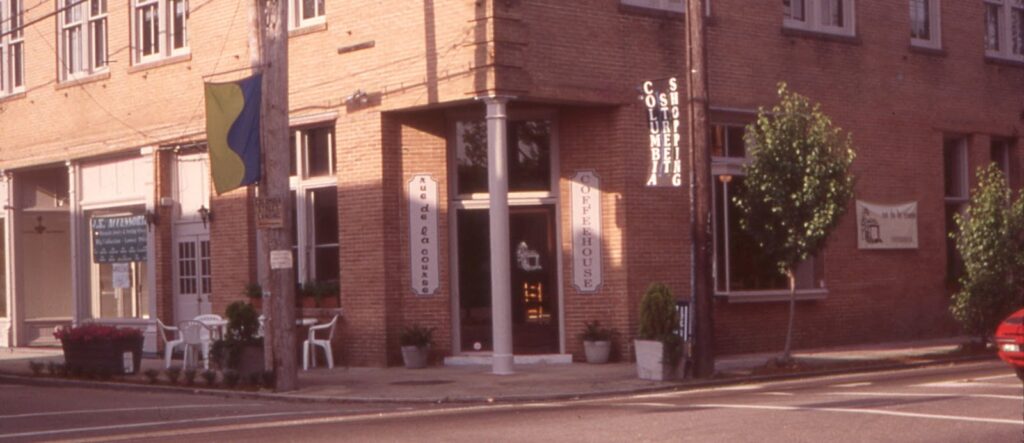
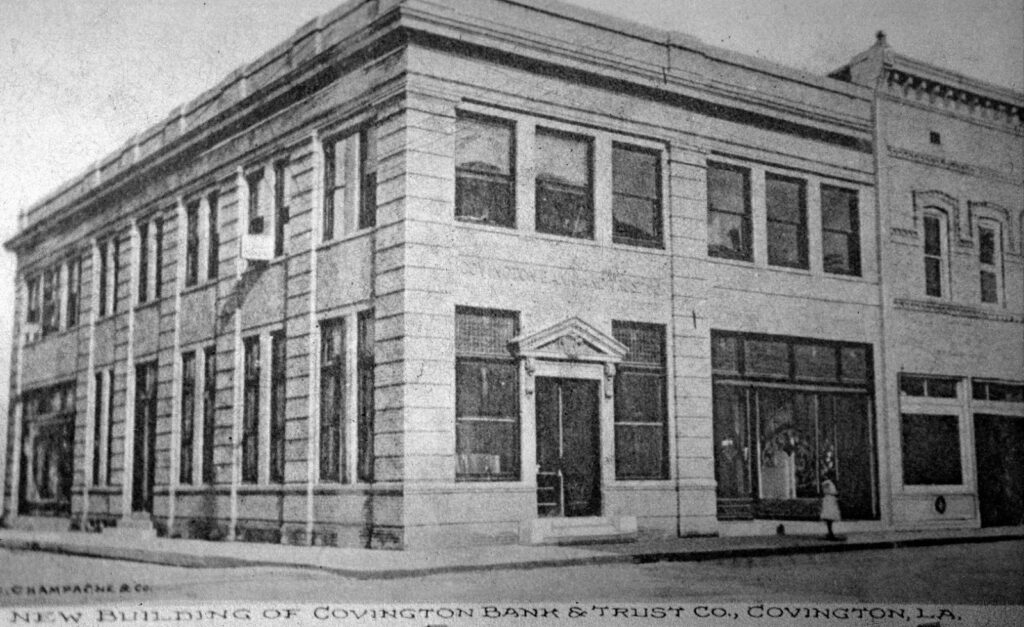
Across Boston to the south is the Frederick building, pictured above, and across Columbia from it is the old Covington Bank and Trust. These buildings were badly damaged in the fire of 1912 and were restored/rebuilt after. A historical marker at the old bank building dates the original structures to 1907.
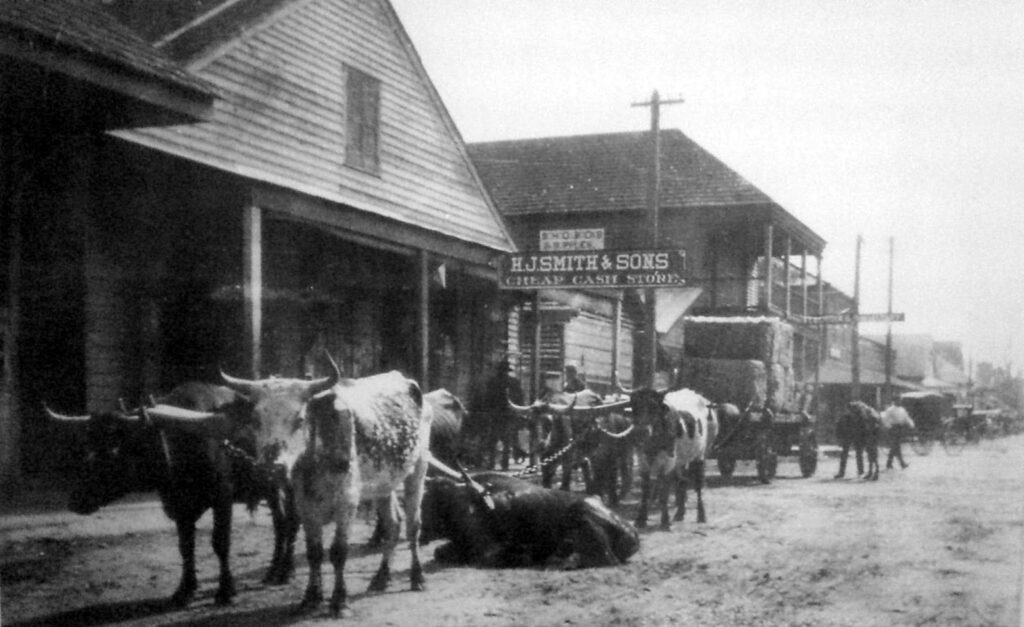
On the opposite corner of Columbia is HJ Smith and Son’s General Store, which along with Kentzel’s Printing and the Farmer are the longest continuously-operating businesses in Covington. Henry James Smith first opened this store and warehouse in 1876 to serve local farmers looking to trade their goods on the river, and the business is still in the Smith family to this day. The warehouse portion of the building no longer stores grains and crops but now serves as a local museum, exploring the history of our great city.
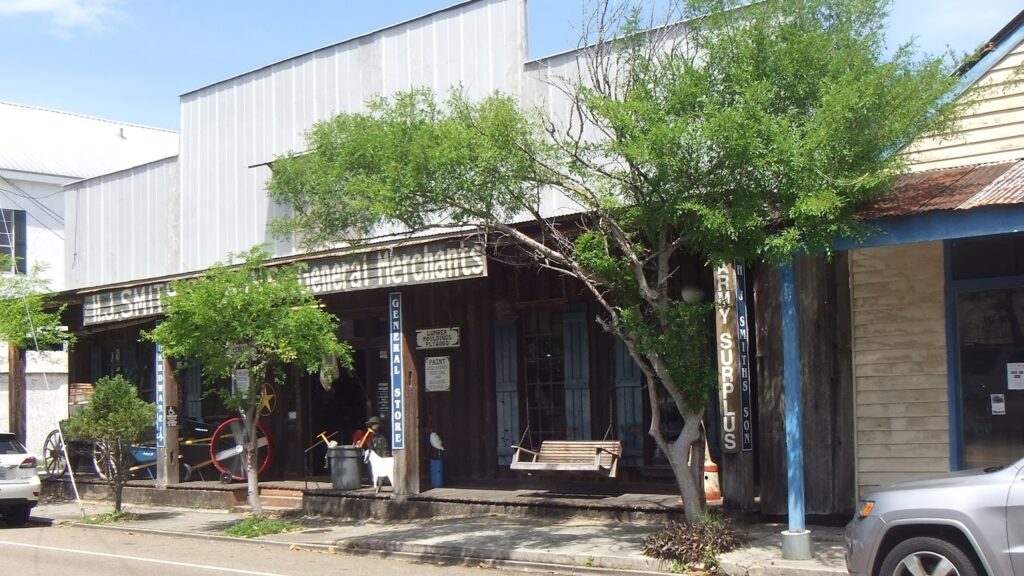
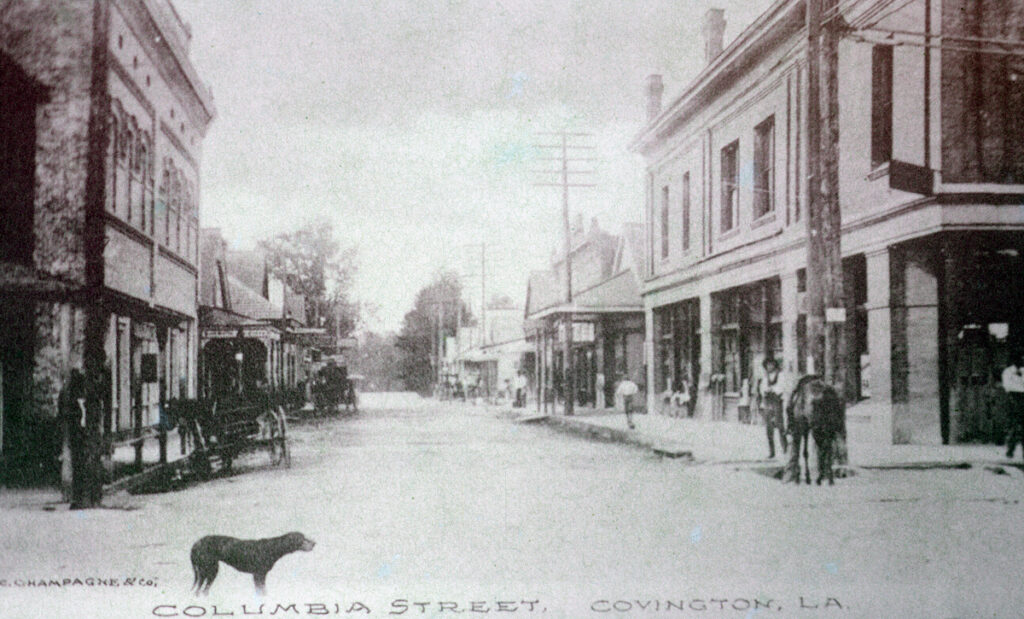
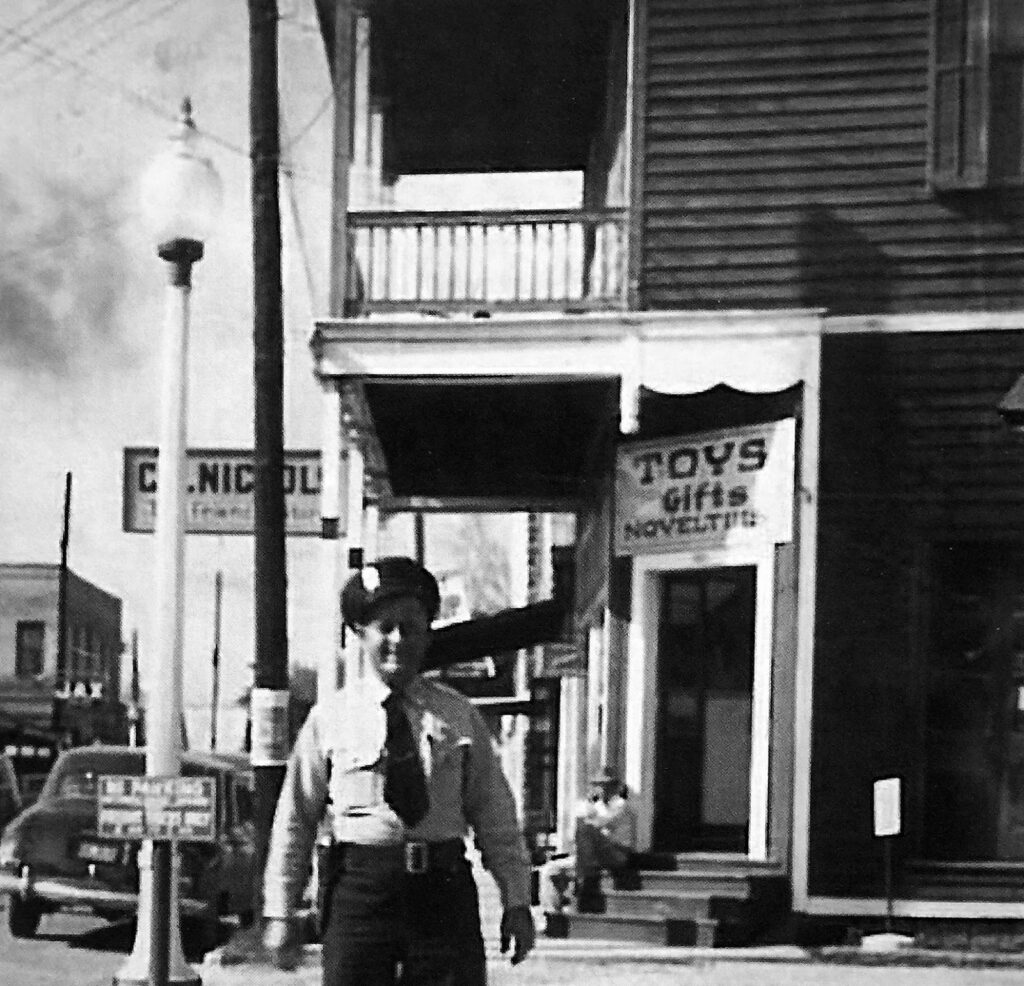
Columbia Street is the heart of Covington’s historic district, and a great number of buildings along it offer historical value. The St. Tammany Art Association is believed to have been the location of the C Nichols Toy Store around the turn of the century. It was later a washateria in the 70’s, as the faded advertisement on the facade facing the alley once read “15 cent wash and 25 cent dry”.

Next door at 308 N Columbia is the original Covington Bank & Trust building, built in 1885. Gibson street right off Columbia was home to many hotels catering to the booming railroad industry at the turn of the century, including the Commercial Hotel, Patrick Hotel and Roubion Hotel.
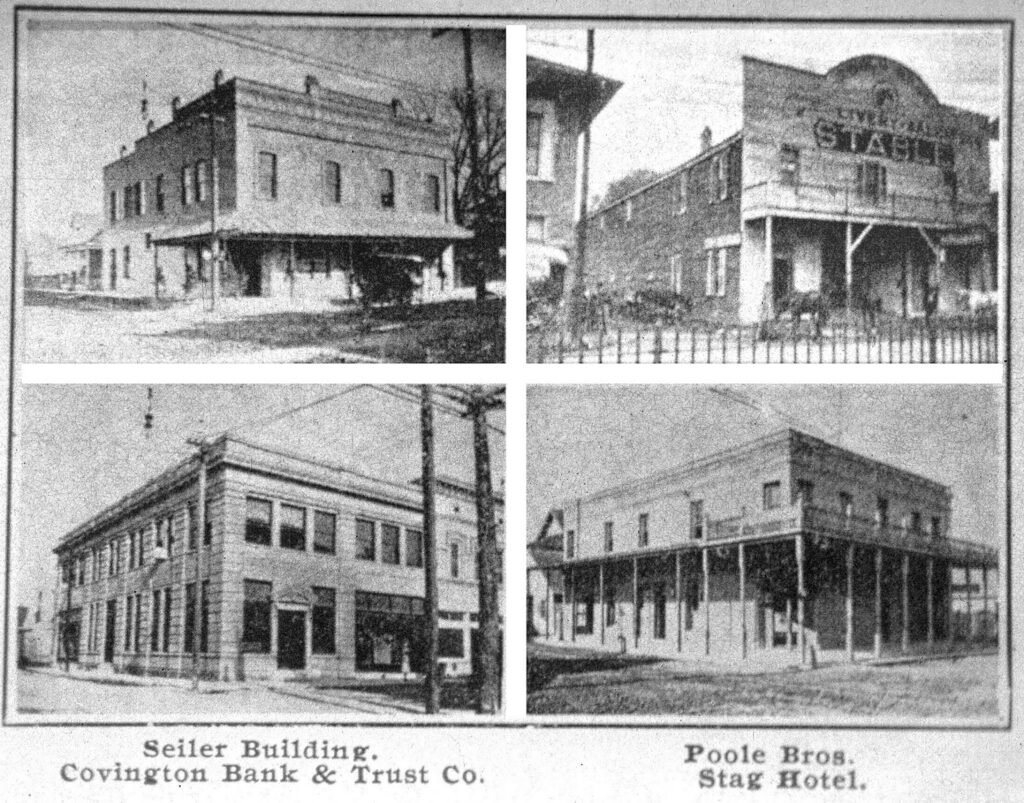
View more street scene photos of Covington circa 1900 – 1930’s here:
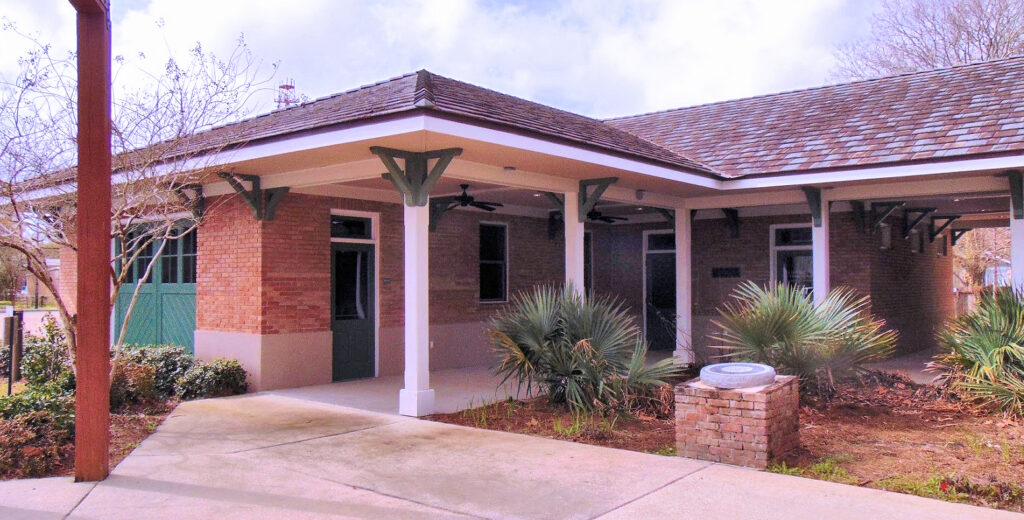
Fun Fact: a couple of issues of Covington Weekly were included in the time capsule, to be opened in 2063.
The Covington Trailhead Museum & Visitors Center at 419 N. New Hampshire Street offers more information on local history, including old photos, an informative short film and a children’s historical animated video!
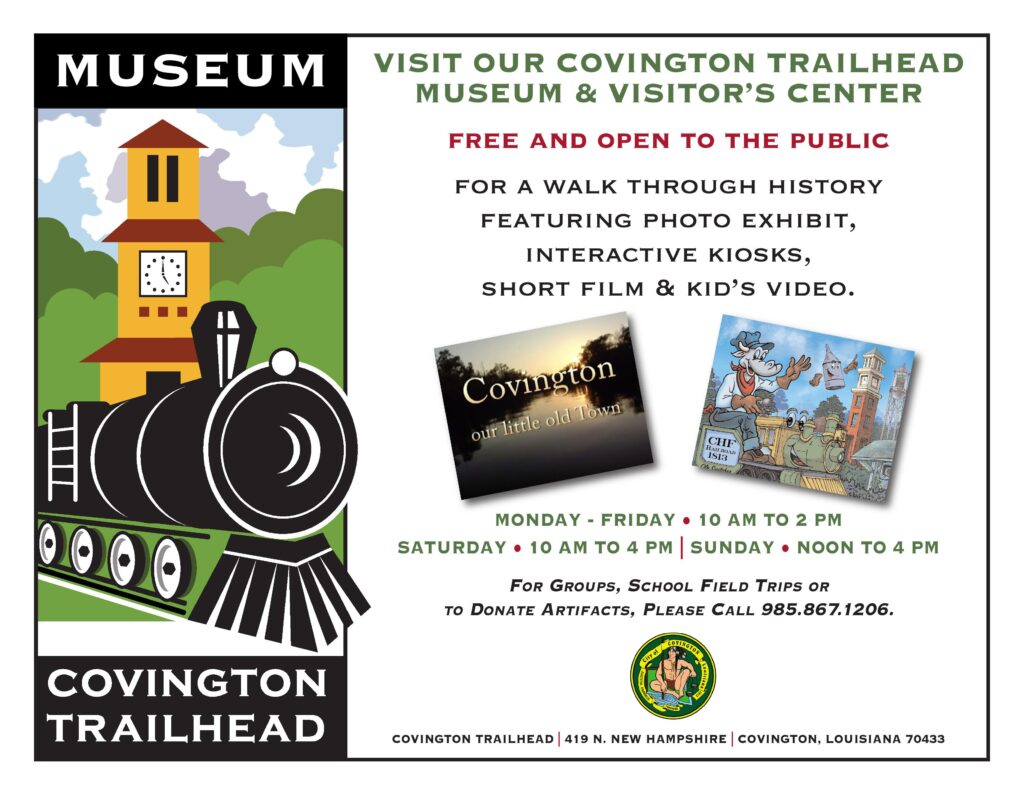
Learn more local history by exploring our Covington History segments, generously contributed by local historical writer Ron Barthet from his website TammanyFamily.blogspot.com. A wealth of historical information and photos are also available at the City of Covington’s website, www.covla.com.
